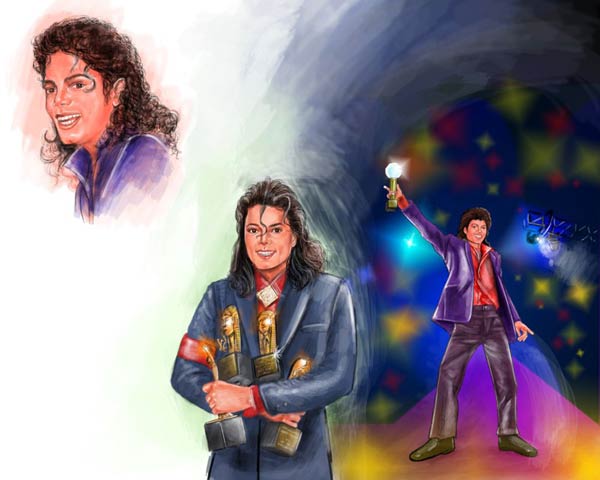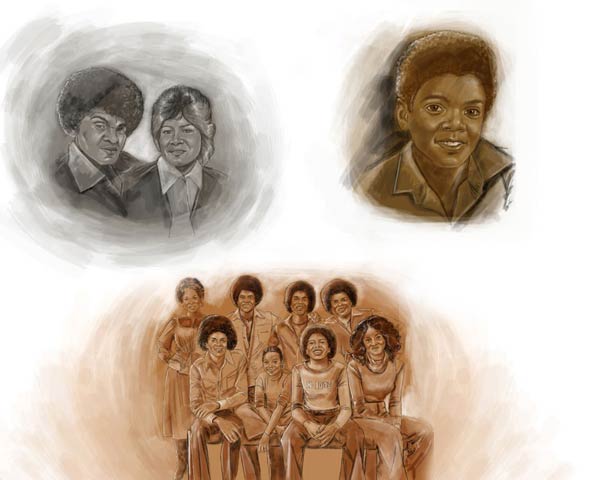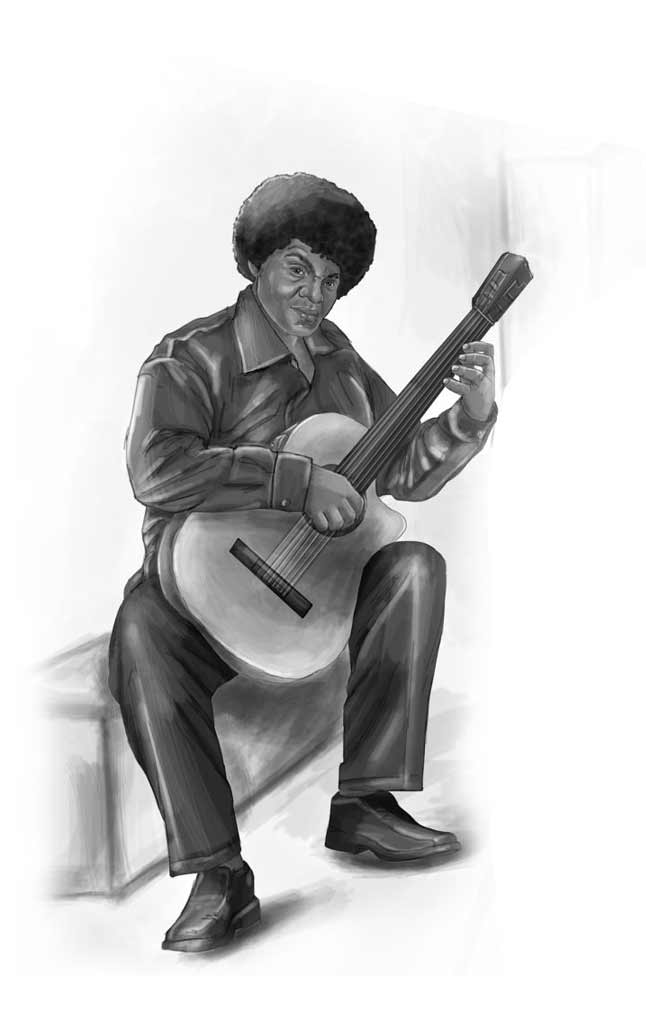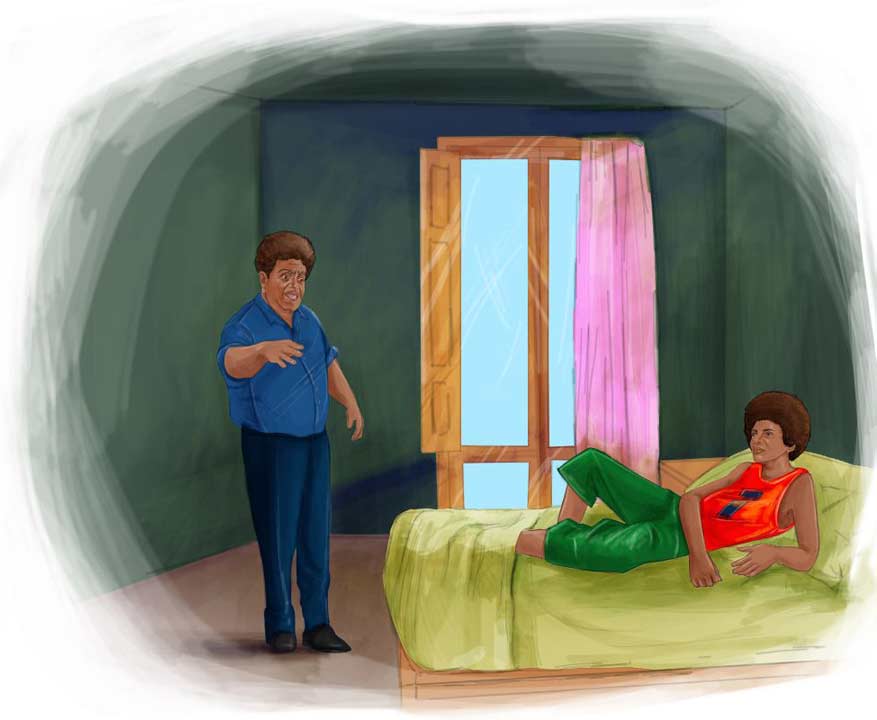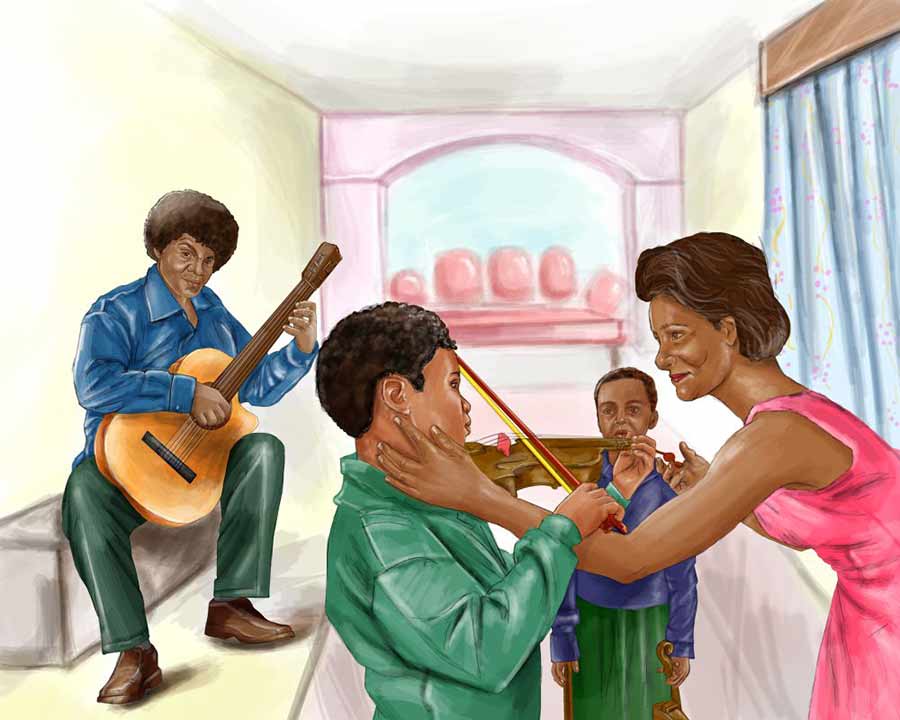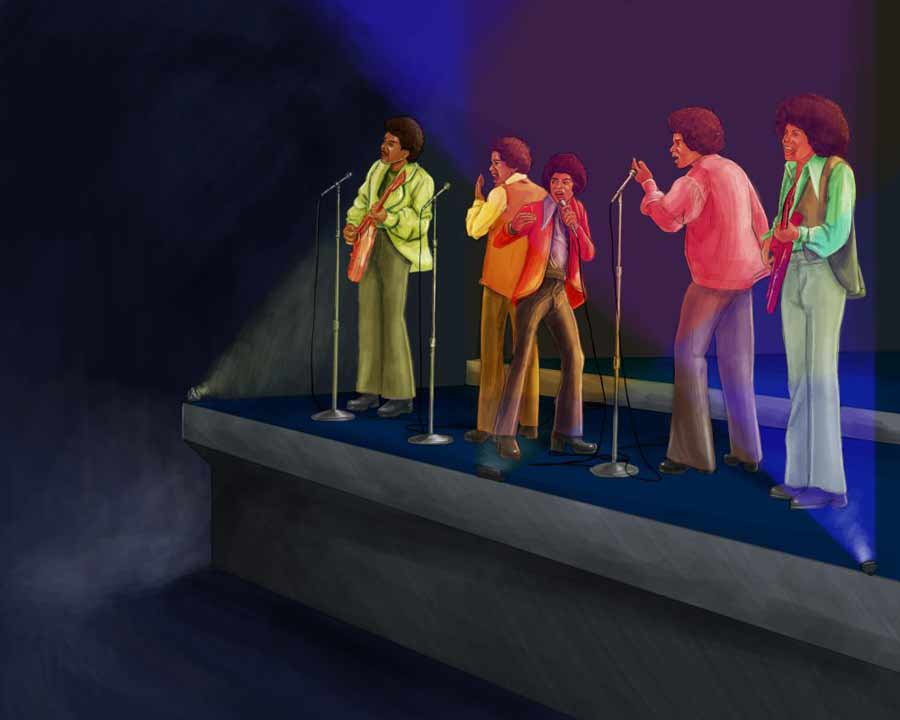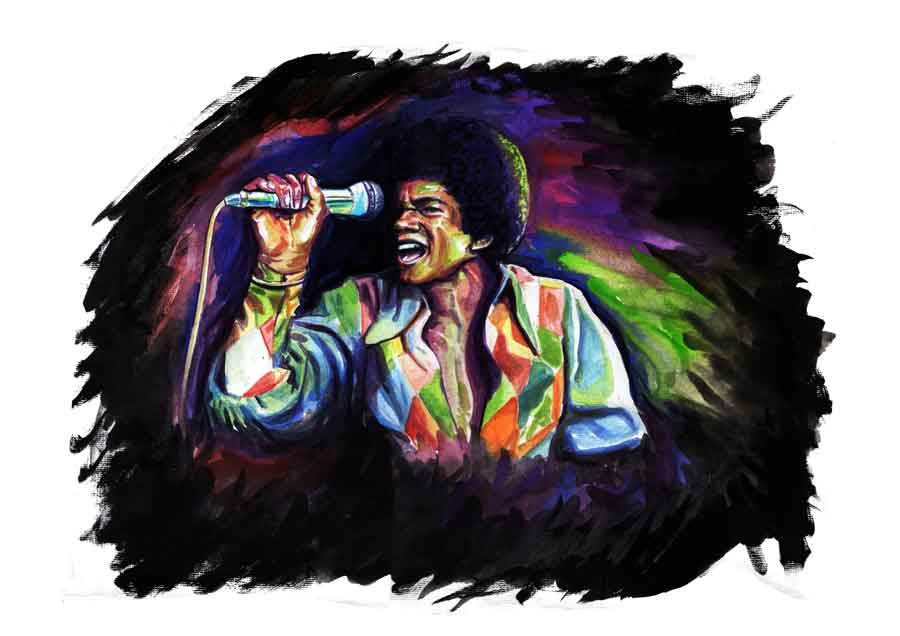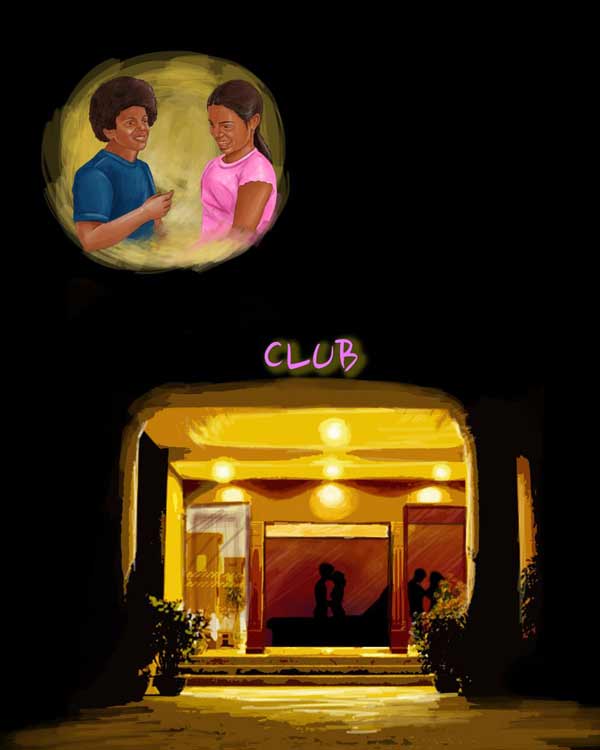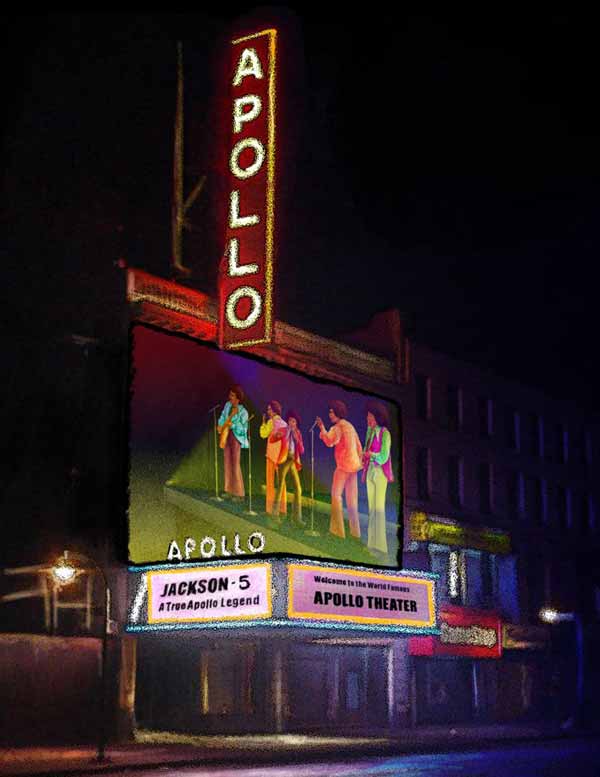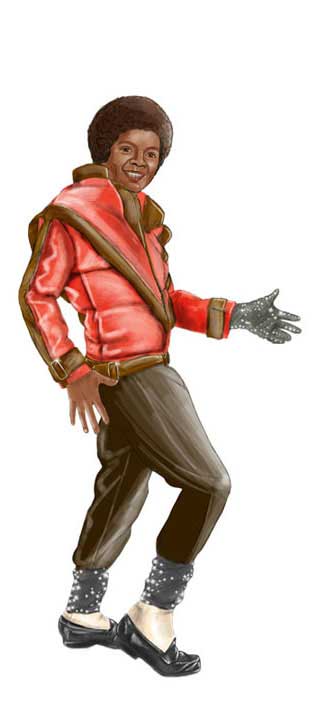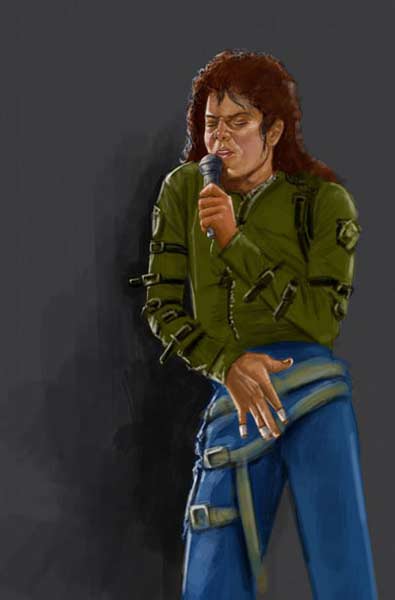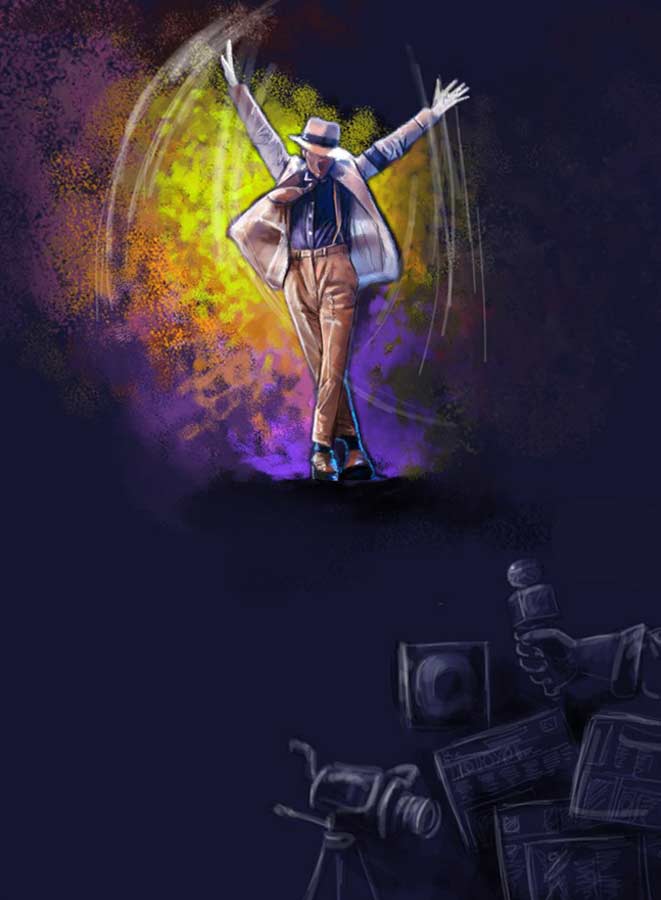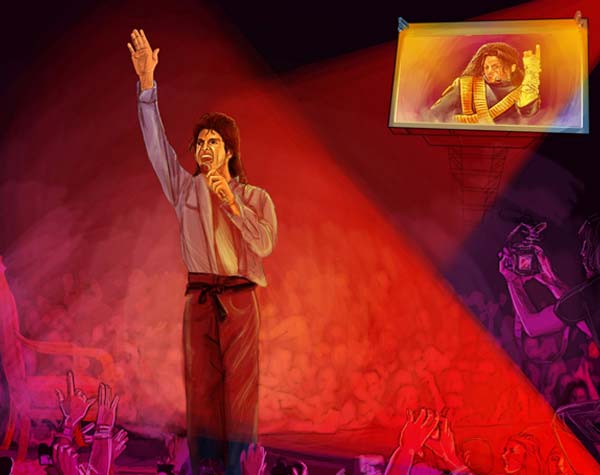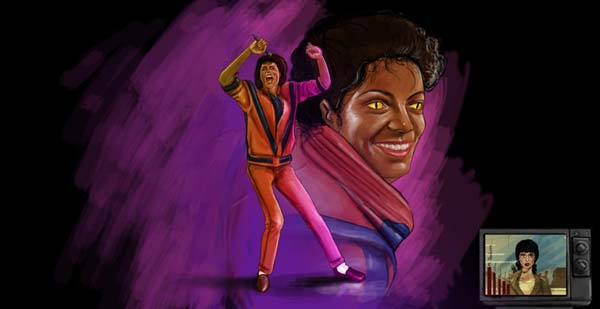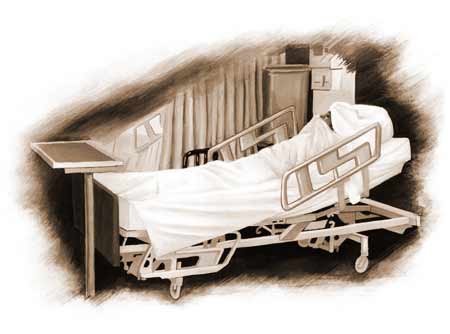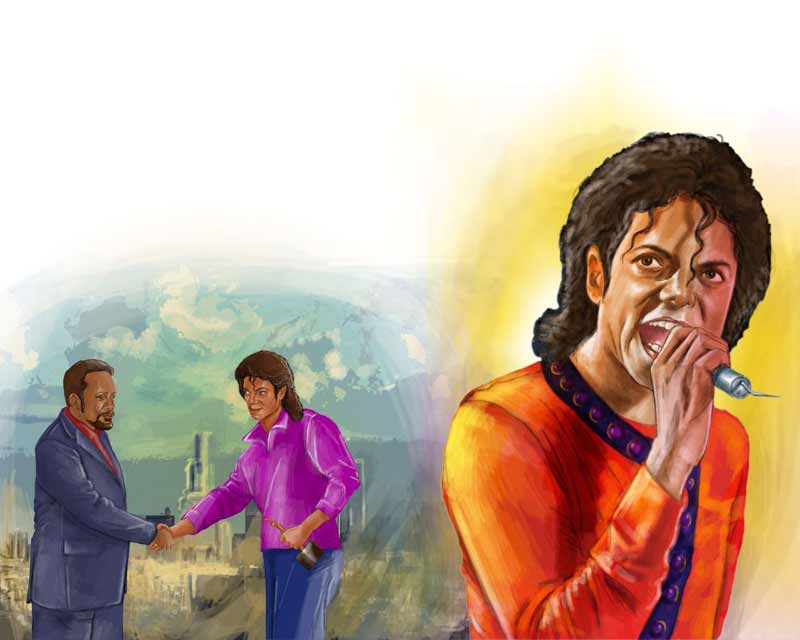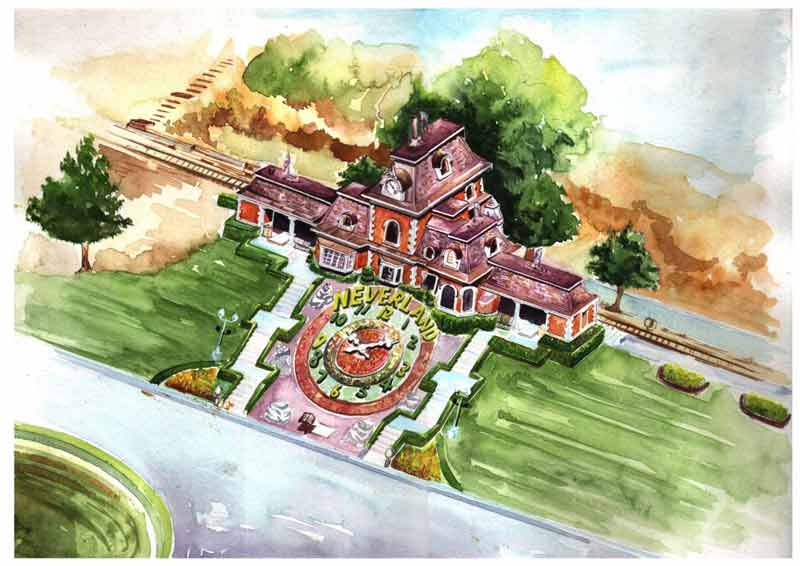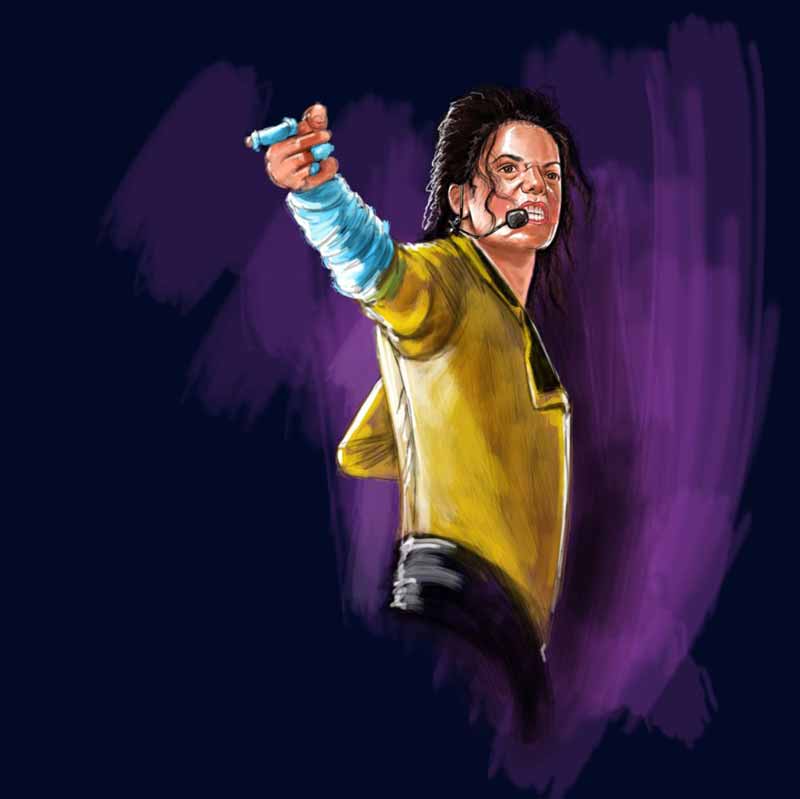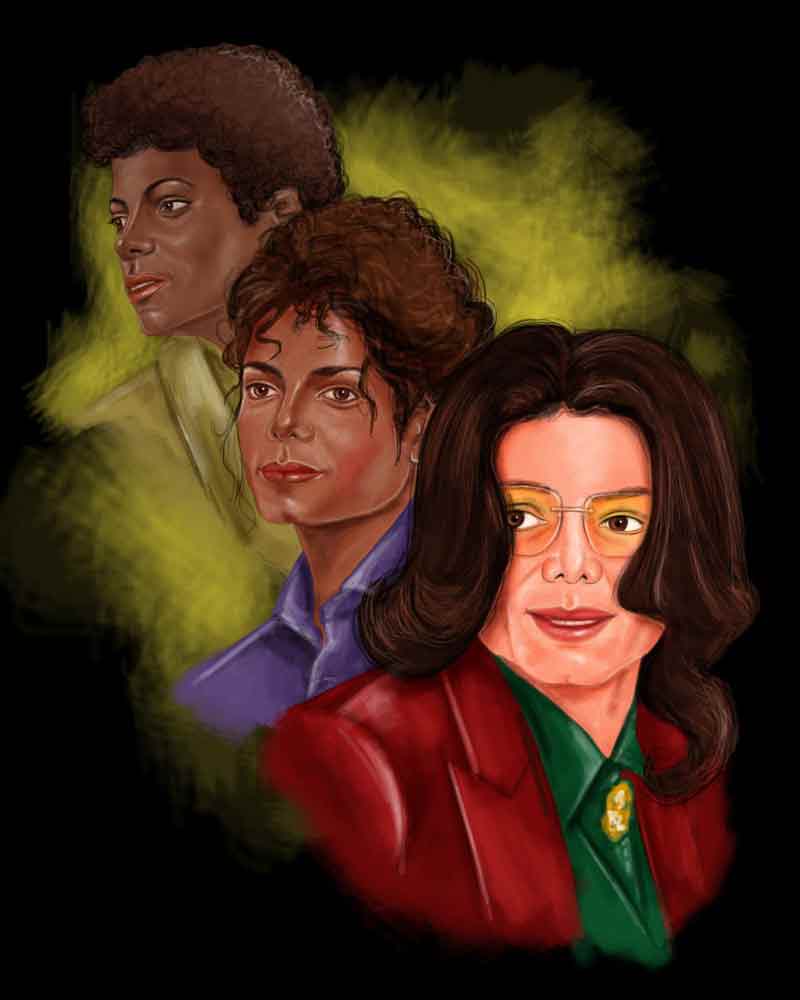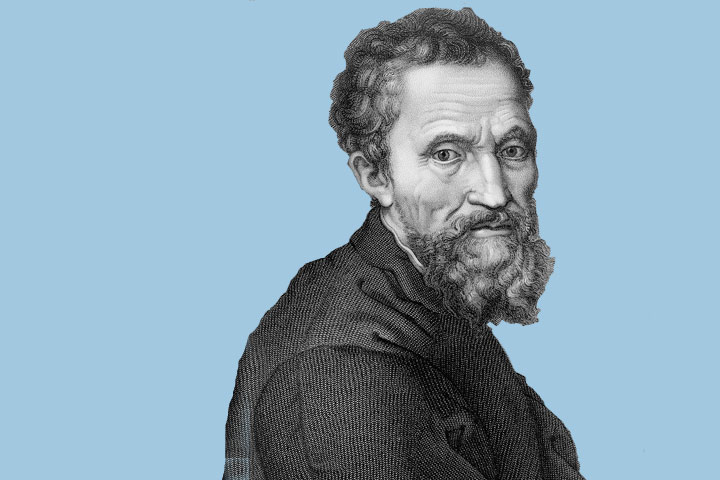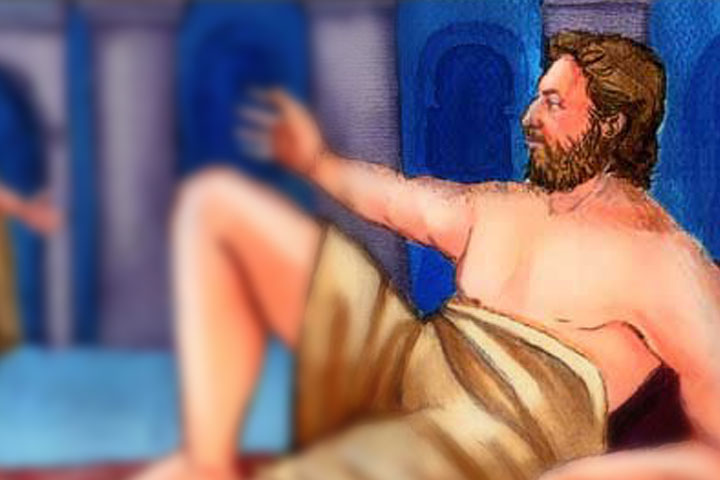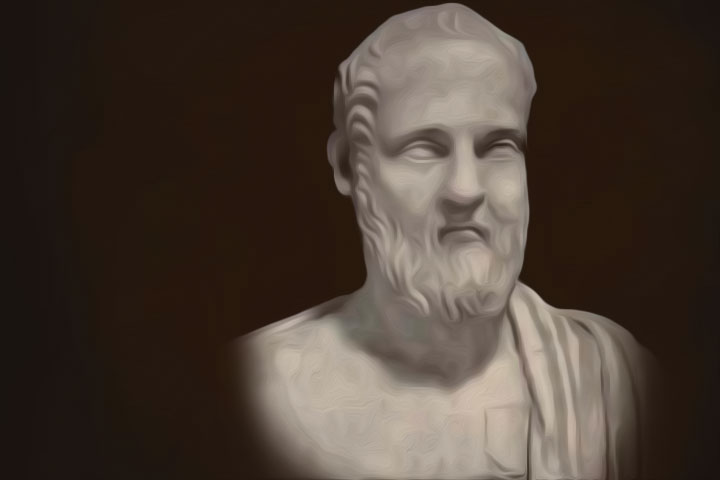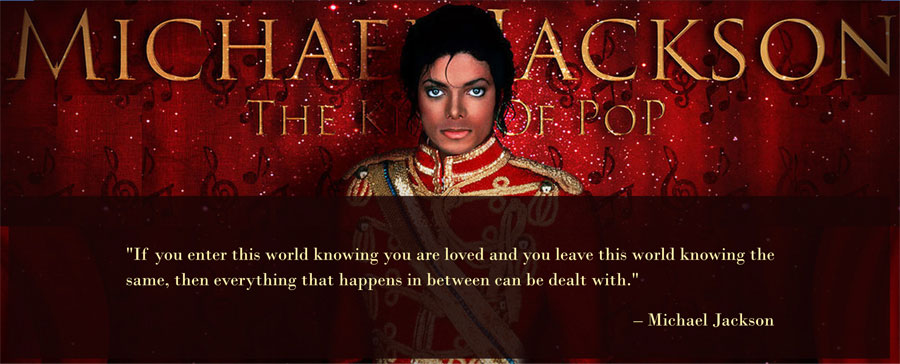

Introduction
“If you enter this world knowing you are loved and you leave this world knowing the same, then everything that happens in between can be dealt with.” – Michael Jackson
It is said, that when someone dies he becomes a star, but there was one who was born a star. Regarded as a musical genius, King of Pop, and a fashion icon, he was not just a man but rather a global phenomenon who redefined stardom, fanhood and euphoria. He was Michael Joseph Jackson or simply “MJ” as called by millions of his worshippers from every nook and corner of the world. A musician, singer, arranger, composer, songwriter, dancer and performer – MJ wasabove all the biggest entertainer this world will ever see. But stardom came at a huge cost for this little boy from a small town in Indiana. Michael never had a childhood as he began working at the tender age of five which meant gruesome rehearsals, no Christmas or birthday celebrations, no childhood friendships and a troubled relationship with his father.
In the later years of MJ’s life, his controversies made more news than his music, and he was often misunderstood by his fans and mostly maligned by the media. Just like his song “Black or White”, his was a chequered life that is full of inspiration and intrigue.

A Humble Beginning
Michael Jackson was born in a modest African-American family on the 29th of August, 1958, in the suburbs of Gary, Indiana in the United States of America. He was Katherine Esther Scruse and Joseph Walter Joe Jackson’s seventh child, born after the premature death of his infant brother Brandon. Michael had eight siblings comprising of three sisters – Maureen ‘Rebbie’, La Toya and Janet and five brothers namely Toriano ‘Tito’, Sigmund ‘Jackie’, Marlon, Steven ‘Randy’ and Jermaine.
MJ’s father, Joe was the first of the Jacksons to dream big. He spent a good part of his life wanting to become a professional boxer; a desire he could not fulfill due to lack of talent and injuries. He then began pursuing a musical career and formed ‘The Falcons’, a Rhythm and Blue Band (R&B) in which he played the guitar. His brother ‘Luther’ also joined the group as a saxophonist. However, Joe was unable to realize his dream of becoming a famous musician either, as The Falcons failed to land a single record deal even after two long years of struggle.
Michael’s mother, Katherine, too aspired to be a country singer. In high school, Katherine joined the local high school band where she played the piano, clarinet and the guitar. But back in the 1940s, there were no takers for a limping black female singer and her dreams soon folded. Yes, Katherine had contracted polio at the age of two and although she survived the disease, it left her with a noticeable permanent limp. However, she never gave up music and played an important role in inspiring the Jackson siblings to take up music right from the very beginning.
Joe met Katherine in 1947 and after a year long courtship, they got married in November 1949. The following year in January 1950, they purchased a two-bedroom house in Gary that would eight years later become the birthplace of the world’s greatest entertainer. During the couple’s early years, they sang together, with Joe playing the guitar. Joe would also hold his band’s jam sessions in the living room. This served as the perfect learning grounds for the Jackson kids.
The Falcons could never really make it big and other than a few odd gigs in Indiana & Chicago, they made little money. Maureen, Jackie and Tito were born the following years and with three children to feed, Joe began working as a crane operator at Gary’s U.S. Steel company. The family’s growing brood caused him to work overtime to make ends meet and even forced Katherine to work as a store clerk in a local Sears store but she later gave up the job to look after the growing family.
Both Joe and Katherine found their escape in music and encouraged their children to sing and dance whenever they found time. Katherine would teach them folk and religious songs while Joe began giving Michael’s older brothers Tito, Jackie and Jermaine guitar lessons. Little Michael, too small to join, would watch his elder brothers and sisters practice with their father. He absorbed a great deal just by watching his siblings perform in their little house.
Katherine was the first person to notice Michael’s talent at the age of five, when she saw him dancing and singing along with the radio. She pointed this to Joe who took Michael under his wing along with older brother Marlon.
Joe soon realized that his kids had serious talent and started spending more time with them. He was a great trainer who believed that great talent required great cultivation and spent a lot of money and time working with his children. He bought a gleaming red guitar for Tito out of his modest savings. There was little money for such luxuries but this did not stop Joe from bringing in more musical equipments for each of his kids. He went on to buy a bass, amplifier and microphones, and soon the Jacksons’ house began to look like a music store.
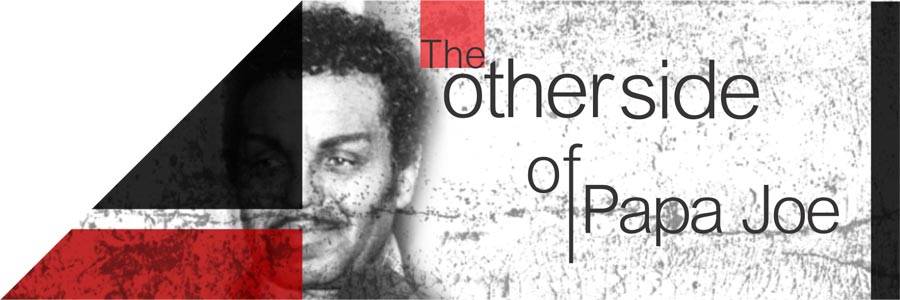
The other side of Papa Joe
Joe Jackson was a complex man to say the least. On one hand, he was this devoted father who worked tirelessly to nurture his kids’ talent and on the other hand he was known to physically and mentally abuse them. He was a strict disciplinarian, ready to whip his children during rehearsals if they made mistakes. One day, he allegedly ordered each of them to call him “Joseph” and not papa or dad.
Michael too bore the brunt of Joe’s abusive nature. A mere appearance of Joe would make five year old Michael shiver and sometimes even puke in fear as his father would beat him up with a belt. Joe was also extremely critical of Michael’s physical appearance and would often taunt him about the size of his nose. That, coupled with the regular beatings he endured at the hands of his father, resulted in a submissive and quiet personality.
Once, Joe held young Michael upside down by one leg and pummeled him over and over again with his hand, hitting him on his back and buttocks. In another instance, one night while MJ was asleep, Joseph climbed into his room through the bedroom window. Wearing a fright mask, he entered the room screaming and shouting, scaring the daylights out of the young kids. Joe said he wanted to teach his children not to leave the window open when they went to sleep.
For a number of years afterward, MJ suffered nightmares about being kidnapped from his bedroom. Although his father’s strict discipline helped Michael become sincere in music, but at the same time, he developed various fears and complexes because of it. The biggest complex being his constant dissatisfaction with the way he looked.

A Loving Mother
Katherine was the peaceful respite for the Jackson kids and she balanced out the aggressive nature of their father. She was warm, gentle and attentive to all the nine children. She believed that her polio was not a curse but a test that God gave her to triumph over, and she instilled such faith in the minds of the little Jacksons. She always told Michael that his talent for singing and dancing was as much God’s work as a beautiful sunset or a storm that left snow for children to play in.
She worried about the stress that the kids were under, thanks to the strict disciplinarian methods of her husband. She somewhat reduced their pain with her love and support. “It’s hard to imagine that we would have gotten where we did without her love and good humour,” Michael mentioned years later.
Thus as a kid, Michael saw two extremes at home in the form of a domineering father and a caring mother. This had a dual impact on his personality. On one hand he developed a strong spiritual side that was full of goodness and love for all; but on the other hand, he developed various phobias that haunted him throughout his adult life.

‘The Jackson Brothers’ rise to fame
Under the strict watch of Joe, the Jackson kids formed a band in 1962 comprising of the three eldest boys Tito, Jermaine and Jackie. The band began to perform at talent shows and local clubs. In 1964, Michael and Marlon joined the group. Michael, who was six, played the congas while Marlon, who was seven, played the tambourine.
With Michael’s immense singing talent, he soon became the side vocalist and later the lead singer and star performer of the group. Their lineup was set; Michael was second from left, facing the audience, Jermaine in the wing next to Michael and Jackie on the right. Tito and his guitar took stage right, with Marlon next to him. Simply called ‘The Jackson Brothers’, they created their own unique sound – a blend of pop and folk music using unconventional instruments like congas and tambourine. Gaining in popularity, they started making regular appearances at music contests across the Midwest, which they won, thanks to Michael’s amazing voice and dance moves.
The Jackson Brothers were renamed ‘Jackson 5’ andtheir fame began to spread to nearby Chicago, an area that offered steady work and the best word of mouth for miles. Joe gave up his job at the steel mill and started managing the Jackson 5 full-time. To make ends meet, he got them a regular act at Mr. Lucky, a nightspot in Gary. Michael and his brothers played five nights a week at the striptease club and spent their weekends in Chicago or other places trying to win as many amateur contests as possible. Michael was only nine at that time and mother Katherine would often worry about the kids working so hard and in places not suitable for their tender age. But Joe wanted to wield his kids in front of live audiences in order to prepare them for the big challenges that lay ahead. All the shows turned to be a great learning experience for The Jackson Brothers as they mastered their skills with each performance. Michael sometimes did not even understand the words that he was singing, but when he sung, everyone listened and when he moved, everyone was left mesmerized.
In 1967, with the help of Tito’s school orchestra teacher Shirley Cartman, the Jackson 5 cut their first record deal with a local label company, Steeltown owned by Gordon Keith. Their first single, ‘Big Boy’, was released in January 1968 and became a regional hit. This was followed by a second single, “We Don’t Have to Be Over 21”(To Fall in Love).
Michael became the blue-eyed boy of the Jackson 5 and got the maximum female attention, which he thoroughly enjoyed. He was a supremely gifted artist; even his brothers used to wonder that without learning he knew so much, which was almost unbelievable. But this gift also meant that Michael was deprived of many of the basic aspects of a regular childhood.
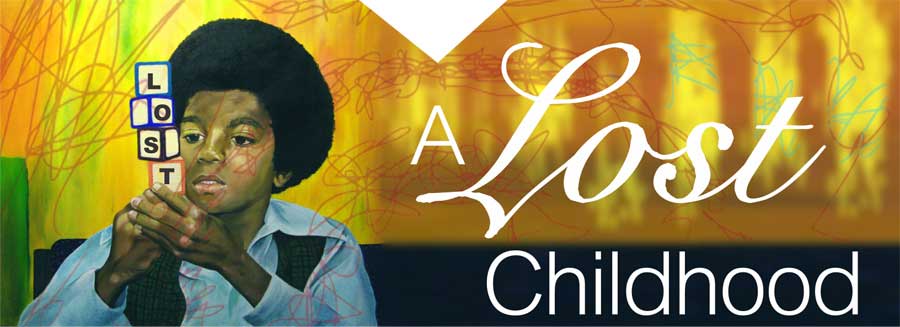
A Lost Childhood
Michael’s childhood was far from being normal with long, exhaustive hours of rehearsals that left little time for fun and games. While other kids of his age enjoyed a carefree life, Michael would be slogging hard after school, sometimes without snacks and with little time to sleep. However, Michael never considered this work since he loved singing and dancing and even at such a young age, he constantly worked to improve himself.
Besides music, Michael loved going to school and attended Garrett Elementary School in Gary. His kindergarten school teacher, Felecia Childress, recalls, “Michael was so happy and he was almost bouncing around the room…and I remember Michael was the center of a lot of attention.” He loved mingling with the other kids and was a favourite of many of his teachers. Michael loved his teachers so much; he would steal his mother’s jewellery and give it to them as presents.
As far as studies were concerned, Michael managed to score above average grades in spite of hectic work schedule. But his rising fame and frequent tours meant he had to give up school when he was just 11. Thereafter, he was coached by a private tutor three hours a day who also travelled with Michael on his various tours.
Michael often satisfied his childlike desires by playing pranks on his sisters. He would tease his sister LaToya by putting spiders in her bed and would threaten to spoil her bed as she was a cleanliness freak. He was very close to his youngest sister Janet but did not spare her either; he nicknamed her “Dunk” as he felt she was too big and looked like a donkey.
Being a part of the band also meant that Michael was exposed to sexuality too early in life. For instance, at the beginning of their careers, The Jackson Brothers would do the rounds of what was called the ‘Chitlin’ circuit’ – a string of black clubs and venues. It involved performing at adult black clubs where striptease acts were the norm. A vulnerable Michael was also made to share a room with his brothers while they had sex with various women on music tours.

Education in Music
After winning numerous talent shows and becoming a household name in Gary and Chicago, Joe decided that it was time to head to New York –a land of bigger opportunities. The Jackson 5 secured a spot in the famous Amateur Night competition at the Apollo Theater in Harlem, New York. And it turned out to be more than a competition for little Michael.
The Apollo Theater was a Mecca of talent with marquee names in the music industry like James Brown, Jackie Wilson, Sam & Dave having performed there in the past. Little Michael was awestruck to be at the theater where he saw pictures of big stars strung to the walls. Michael would sneak backstage, crouching low, holding on to the stage curtain and watch other performers at the Apollo Theater. He would observe every step, every little detail. He called this his education and recreation. “The greatest education in the world is watching the masters at work”, Michael believed.
On August 13, 1967, the Jackson 5 won the competition during the Amateur Night showdown, and caught the attention of Motown Records artist Gladys Knight who recommended the group to Motown chief Berry Gordy. Motown Records was a major force in the music industry back then and an audition with them could be the game changer for the Jackson 5. But the audition call did not come that easy, as Gordy who already had teenager Stevie Wonder on his rooster, was hesitant to take on another child act because of the restrictive child labour laws.
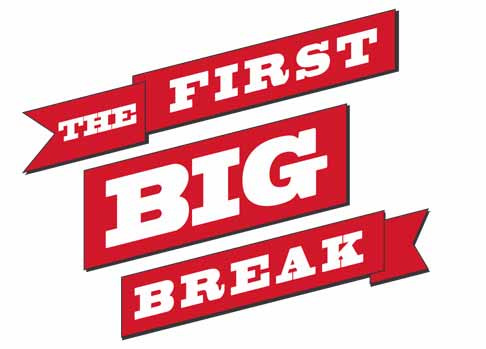
The First Big Break
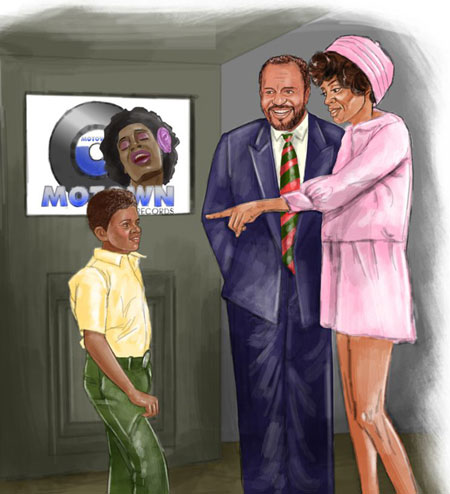
After a year long wait, the Jackson 5 finally had their Motown audition on July 23, 1968, for which they performed James Brown’s then current hit “I Got the Feelin.” When it ended, there was no applause and no word said by anyone. The Jackson 5 along with their father-manager Joe Jackson returned home, subdued and disappointed.
A few days later, Joe received a call from Motown that his kids had passed the audition and had been signed for a record deal. This was the biggest turning point in the career of the Jackson 5, as the small band from Indiana had finally entered the mainstream music industry. And they sure did it with a bang. Their first four singles for Motown, “I Want You Back”, “ABC”, “The Love You Save” and “I’ll Be There”, hit number one spot, a first in pop history. They sold more than two million copies each and caught the fancy of the entire nation.
The Jackson 5 moved to California and stayed with Motown chief, Gordy and another Motown star Diana Ross, who looked after the kids like a mother. Michael, who was just 11, was thrilled with his new life and knew that performing at cheap clubs was now a thing of the past.

A Changed Life
It was a great time for Michael and his brothers as they visited Disneyland, swam together at the Sunset Strip beach, played games and rehearsed with Motown artists. Motown’s PR team ensured that Michael and his brothers were heavily merchandised on everything from stickers and jacket patches to posters, lunch boxes, colouring books and a Saturday morning cartoon on ABC that ran for two seasons, beginning in 1971. And with every success, MJ blossomed and started getting more and more limelight. A clever Gordy tapped into Michael’s potential and recorded four solo albums with him. They were as successful as the group albums, hinting at the international phenomenon which Michael was on the verge of becoming.
In 1971, when Michael was just 13, his first single “Got to Be There” made it to the Top Five. Following this achievement, his cover version of R&B (Rhythm and blues) singer Bobby Day’s “Rockin’ Robin” repeated the same feat. In 1972, “Ben,” a song he sang for a children’s movie about rats became his first solo single to reach the number one spot. It was also nominated for an Academy Award.
A prequel to the moonwalk, Michael started enthralling audiences with unique robot steps in the single The Dancing Machine. The Times praised the 14-year-old’s performance at the Liverpool Empire in the United Kingdom saying, “he has an astonishing command of gesture and his twinkling feet scarcely seemed to touch the stage.”
Where a legendary life story was in the making, romance was blooming in the air for Michael. The young entertainer had his first real date with the child actress Tatum O’Neal, when he was 17, and he called her, his first love. She was a popular actress, who at the age of 12, became the youngest person ever to win the Academy Award for Best Supporting Actress for her performance in Paper Moon. Michael and Tatum dated till the early 80’s until the pair eventually cooled off as both were too busy with their respective careers.

Sibling Rivalries
It seemed like a joyous time for the Jackson family professionally as they started enjoying the fruits of their years of toil. However, a seamier side of their speedy rise to glamour and wealth emerged as their personal relationships hit troubled waters. As Michael began to hog the limelight, differences started to arise between the children. Ego clashes became common and they began taking shots at each other, sometimes even in public.
Their music career as a band also derailed during this period. After 1972, The Jackson 5′s releases with Motown were not as successful. Just like Michael, elder brothers Jackie and Jermaine came out with their own solo albums but that too found little success. The brothers and father began to believe that Motown was not giving them enough artistic freedom and began shopping for a new record deal.
In 1975, Joe negotiated a recording contract with CBS Records (formerly known as Infinity Broadcasting Corporation), who offered a royalty rate of 20% per record, compared to Motown’s standard 2.8%; and would allow The Jackson Brothers to write and produce their own records and play their own instruments. They were however forced to change their name to The Jacksons, as Motown retained the ‘Jackson 5’ trademark. Randy replaced Jermaine in the group as the latter married Gordy’s daughter Hazel and decided to stay with Motown, pursuing his solo career. This further strained the relations between the Jackson siblings.
While managing his boys, Joe was alleged to have engaged in several extramarital affairs; which contributed to several siblings being estranged from their domineering father. Subsequently, the Jackson Band disintegrated officially but collaborated multiple times in the future, although for brief periods only.

Rise of MJ
Michael’s greatness lies in the fact that he did not allow his personal anguish to hamper his blossoming musical career. Instead, he used music as a weapon to gain independence from his troubled personal life and touched the hearts of millions around the world.
In 1978, Michael made his first foray into cinema in a modern adaptation of ‘The Wonderful Wizard of Oz’ called ‘The Wiz’ co-starring Diana Ross and others in an all-black production. Based on a Broadway musical of the same name, the film tanked at the box office and was panned by critics, despite four Oscar nominations.
Working in The Wiz was nevertheless a life-changing experience for Michael. It was here that he met legendary producer and composer Quincy Jones with whom he forged a bond that lasted a lifetime. Michael’s relationship with his father-manager Joe had always been turbulent and when Jones entered his life, Michael relinquished Joe of his managerial duties. Jones became a father figure and role model for Michael and he quickly latched onto him to fill the void in his life. Jones took Michael under his wing and helped him bring out his next album titled “Off the Wall”. The recordings took place across Los Angeles and Michael got the opportunity to work with music industry stalwarts like musician Rod Temperton as well as singers Paul McCartney and Stevie Wonder.
Michael’s education paid off as the album won both critical and public acclaim. The hit single “Don’t Stop Till You Get Enough” that he wrote, went platinum on the charts. The multi-platinum certified Off the Wall broke records with songs like “Rock with You” and sold over 20 million copies worldwide. A perfect blend of multiple music genres like pop, disco, funk, soul, jazz and soft rock, it also earned Michael his first Grammy Award.

The Thriller phenomenon
While the ‘Jacksons’ faded as a band in the early 80s, Michael was getting tremendous recognition as an individual artist. In an era where only Hollywood actors were seeing stardom, MJ revived the pop star culture which existed at the time of Elvis Presley, the King of Rock & Roll.
His next solo album ‘Thriller’ released in 1982 to an astounding response which till date, remains the undisputed champion as the best-selling album of all time. Produced by Quincy Jones, it took the music of Off the Wall to the next level. The surprise package of maestros like Vincent Price who did a terrifying voice-over, Eddie Van Halen rocking the guitar for “Beat It” and Michael’s duet with the most-loved Beatle, Paul McCartney for “The Girl Is Mine”, only added to the album’s spellbinding magic.
Michael created an over-10 minute-long ‘Thriller’ video that was played over an over again on MTV, an upcoming music channel at that time. A compact horror film with revolutionary effects and make-up, it set the standard for the music video format of today. Michael explored his dark side and the duality of his personality in the video, playing the role of a cute teenager who changes into a zombie at night. The zombie dance sequence where Michael joins other monsters was a brilliant and memorable piece of choreography. The video is still considered by many as the best music video of all time.
MTV owed its initial popularity to the path-breaking ‘Thriller’, and the other video by MJ including ‘Beat It’, all of which told stories to draw the viewer in.
‘Thriller’ continued to break records and spawn singles, each more successful than the next. Industry analysts were befuddled by the seemingly endless hit singles that kept coming from the album, seven of which reached the Top Ten singles position. “Thriller” was number one for a mind boggling 37 weeks and refused to give up its place on the charts for an unmatched period of two years.
‘Thriller’ brought Michael national and international fame, selling 29 million copies in the US and 20 million abroad. He became a household name around the globe and won eight Grammy Awards. It also made him richer by $125 million. Pepsi made him its brand ambassador and Michael landed the biggest endorsement deal of that time, of reportedly $50 million. He also won a sponsorship deal with the American shoe company LA Gear.
In 1981, Michael met 15 year old model actress Brooke Shields and fell in love with her. They had a close relationship that lasted for several years. They would talk about marriage several times but never tied the knot, as their relationship was more platonic than romantic.
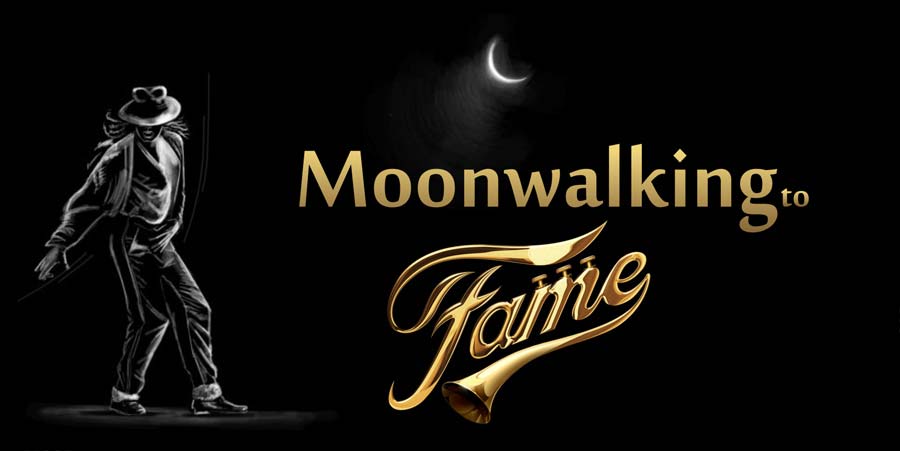
Moonwalking to fame
Apart from being a singing sensation, Michael had an almost spiritual relationship with dance and it showed on stage. “This world we live in is the dance of the creator. Dancers come and go in the twinkling of an eye but the dance lives on. On many an occasion when I am dancing, I have felt touched by something sacred. I keep on dancing then it is the eternal dance or creation…I keep on dancing…and dancing…and dancing. Until there is only…the dance,” he said.
On May 16, 1983, the original Jackson 5 reunited after nearly 7 years, to celebrate Motown’s 25th anniversary. It was during this televised performance that 24-year-old Michael did what he termed ‘moonwalk’ dance move during his rendition of “Billie Jean.” It was a baffling gravity defying dance move in which he gave the impression of moving forward when, in fact, he was moving back. The move became an instant rage and MJ ‘moonwalked’ right into the hearts of his innumerable fans. It soon became a common sight at discos, parties and even in the movies. Ecstatic at its popularity, Michael even named his autobiography Moonwalk. Work on the book started in 1984 and it took four long years for the book to land on book shelves.
Jackson also got his solo star in the Hollywood Walk of Fame in 1984; the Jackson 5 already had a star in 1979. He and Diana Ross are the only two people to have two stars in the Hollywood Walk of Fame.
MJ – The Fashion Icon
Michael Jackson’s fashion sense was as remarkable as his musical style and dance moves. Millions imitated his pegged pants and penny loafers. Interestingly, he also patented a shoe device that allowed dancers to lean forward at gravity defying angles and used the same in a lot of his performances.
He even designed the zipper-covered ‘Beat It’ jacket which was a military-inspired coat with epaulets, crests and insignias. And of course, who can forget that glittery crystal rhinestone studded glove worn by Jackson when performing the moonwalk on Motown’s 25th celebration.
“I want the fashion designers in the world, the big conglomerates; I want them to copy me. I don’t want to wear what’s out there. I want to push my individuality, and being that my music is me, my look should be me,” he would say.

A Near Death Experience
In 1984, 26 year old MJ was filming a Pepsi commercial in front of a full house of fans. During the simulated concert, pyrotechnics accidentally set Jackson’s hair on fire. He suffered second-degree burns to his scalp and was immediately rushed to the hospital. Jackson underwent treatment to hide the scars on his scalp but never recovered from this injury. Although shaken by the accident, it never dented Michael’s spirit, as he always bounced back from every obstacle that came his way.
An anxious Pepsi, settled out-of-court, and Jackson donated his $1.5 million settlement to the Brotman Medical Centre in Culver City, California, where he received his treatment. The hospital now has a ‘Michael Jackson Burn Centre’ in honour of his donation.
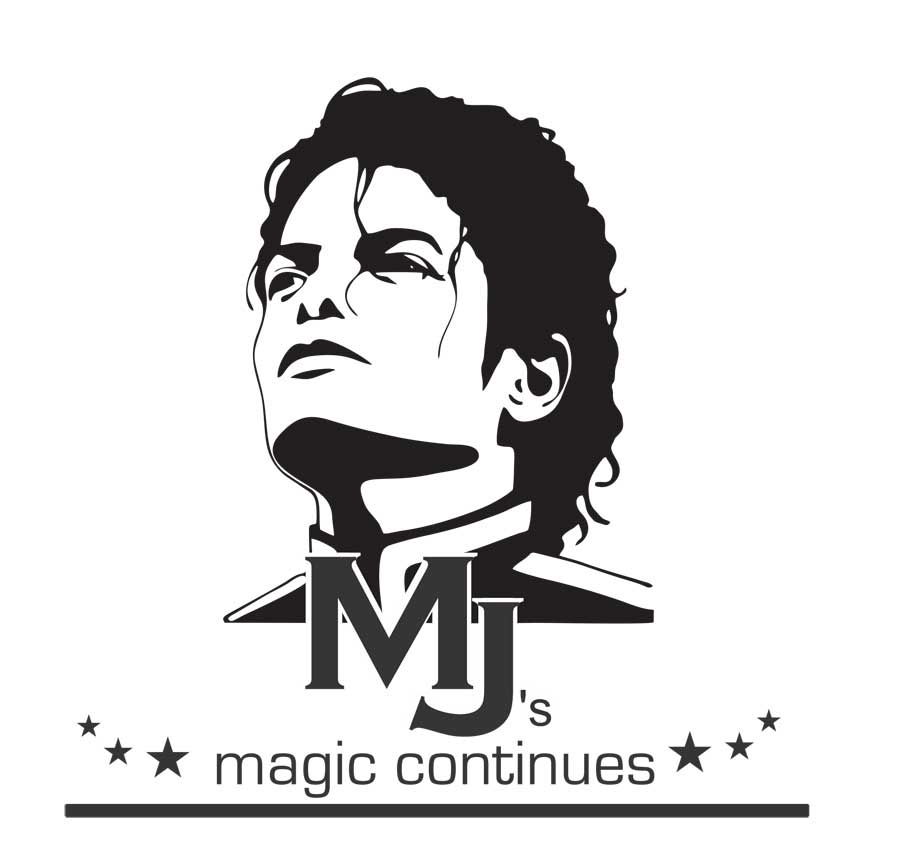
MJ’s magic continues
Michael’s luck showed no signs of running out as he continued to reign on the charts. He worked magic even when he paired up with his contemporaries who benefited from his success. His collaboration with his favourite Beatles star, Paul McCartney, “Say, Say, Say”, once again reached the number one position in 1983.
In 1984, Michael and his brothers joined hands once again for a new album called Victory. The album received tepid response but their countrywide tours earned them top dollars, largely due to Michael’s presence.
At the peak of Michael’s career, everyone wanted to work with him. In 1985, he wrote the inspiring “We Are the World” along with singer Lionel Richie. All the big music stars of that generation lent their voices and appeared in the video of the song at Michael’s request. It broke records and became one of the fastest selling singles of all time. This was also the beginning of Michael’s involvement with social causes as the profit from sales was utilized for famine relief in Africa. The same year, TIME magazine compared Michael to superstar Elvis Presley and said he was “the hottest single phenomenon.”
Michael’s professional highs had always been accompanied by personal lows. A case in point was the year 1985. That year, ATV Music Publishing, a company that owned the publishing rights to most of the Lennon-McCartney Beatles songs, was put on sale, which meant that the acquirer would get 50% ownership of the hit songs. MJ immediately showed interest. McCartney himself bid for the rights to his own songs but dropped out when MJ agreed to shell out $47.5-million for 50% ownership. This irrevocably strained the relationship between the two friends and collaborators, as McCartney found it quite annoying to pay for playing his own songs.
Business-wise, it turned out to be an astute move by MJ. Although acquired at a lofty price, Sony later acquired 50% stake in the company for $90 million in 1992 and the company was renamed Sony/ATS Music Publishing. Today, it is the second largest publishing company in the world with earnings of $2.5 billion a year.
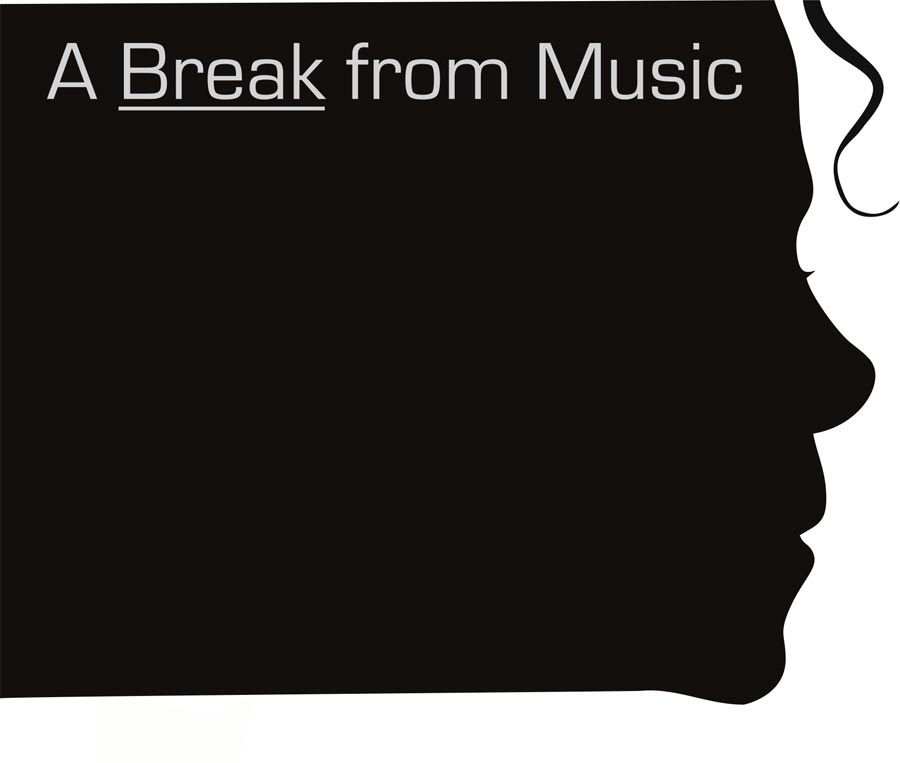
A Break from Music
Post 1985, Michael decided to take a long break from music, one of many in his illustrious career. Attracted to Hollywood, he spent his time working with well-known directors Francis Ford Coppola and George Lucas on the ambitious 3D film Captain Eo. Made on a budget of $30 million, the 17-minute film released in September 1986 at both, the original Disneyland and EPCOT, a theme park in Florida, and in March 1987, at Tokyo Disneyland. The movie made for great family viewing in Disney’s widescreen IMAX theaters at all the three parks. It also ran at the Paris Disneyland until 1998.
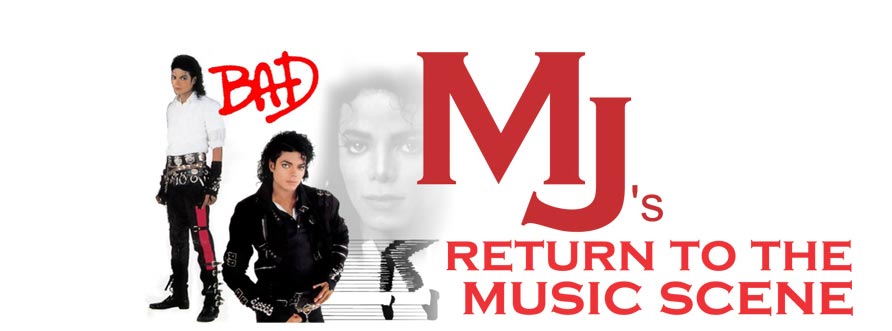
Bad – MJ’s return to the music scene
After the well-deserved break from music, Michael, 29 now, once again teamed up with Quincy Jones to accomplish the insurmountable task of recreating the magic of Thriller in a fresh new album titled “Bad.” His fans waited with bated breath for the release of Bad in 1987. It managed to live up to people’s expectations; however, many felt that it lacked the artistic genius of Thriller.
Bad got rave reviews and predictably made it to the number one position. “I Just Can’t Stop Loving You” sung with back-up vocalist Siedah Garrett also became a number one hit. Aping the Thriller model and spawning singles for an entire year, Bad made music history. the album became the first one ever to have five number one singles : “The Way You Make Me Feel”, “Dirty Diana”, “Man in the Mirror”, “Bad” and “I Just Can’t Stop Loving You”.
Michael explained his concept for the song and video of Bad in his autobiography Moonwalk saying, “Bad is a song about the street. It’s about this kid from a bad neighbourhood who gets to go away to a private school. He comes back to the old neighbourhood when he’s on a break from school and the kids from the neighbourhood start giving him trouble. He sings, ‘I’m bad, you’re bad, who’s bad, who’s the best?’ ” He supported the album by touring the country with an extravagant show complete with ornate stage and special effects. It turned out to be the most commercially successful tour in the history of music. Critics though felt Bad fell short of Thriller, both in terms of content and sales. While Thriller reflected the evolution of Michael as an artiste, Bad lacked focus and was a mish-mash of styles and genres. It sold 8 million copies in America compared to Thriller which sold 29 million. In the overseas market too, Thriller beat Bad with 20 million copies sold compared to 16 million.

A childhood re-lived
Super star Michael Jackson loved being in the company of children. “Children don’t lie to you. Children are pure and innocent and good. Being with children is like being blessed, like being with angels”, Michael would often say about them. He had a harsh childhood and perhaps this was the reason he was so fond of kids and loved to do things for them.
Michael had lived in the world of grown-ups that was filled with brutality, back-biting and fear. His childhood was lost in this treacherous world and so in 1988, when he was financially secure, he decided to relive his childhood by building a world where there was peace and kindness, where every candy imaginable was available, and where fun was the only accepted currency. He chose a 2700 acre land near Santa Ynez, California, to build this world and called it ‘Neverland Ranch’. It cost him $17 million and he installed ferris wheels, roller-coasters, mini train, a movie theater, private zoo and a staff of 40 to guard this wonderland.
These may have been reminders of activities he was never able to participate in as a child due to his strict and regimented upbringing. Every year, hundreds of underprivileged children would be given guided tours of MJ’s wonderland, sometimes by MJ himself.

A Philanthropist and Humanitarian
Michaels’s philanthropic work did not end here. From 1985 to 1990, he donated $500,000 to the United Negro College Fund, and all of the profits from his single “Man in the Mirror” also went to charity. His generosity and significant involvement in social causes were commemorated with ‘The Soul Train Heritage Award’ given to him in 1989. Michael was associated with a number of children’s charities as well and started his own ‘Heal the World Foundation’ in 1992 through which he donated over 300 million dollars.
He holds the Guinness World Record for a pop star giving aid to the largest number of charities. As a result of his humanitarian work, Michael could count Queen Elizabeth and former US President, Ronald Reagan among his group of friends.
Following the death of American teenager Ryan Wayne White from HIV AIDS, Michael also became an unofficial spokesperson for the illness that was still considered a stigma during his time. A noteworthy achievement was his public appeal to President Bill Clinton seeking funds for AIDS-related research and charities.
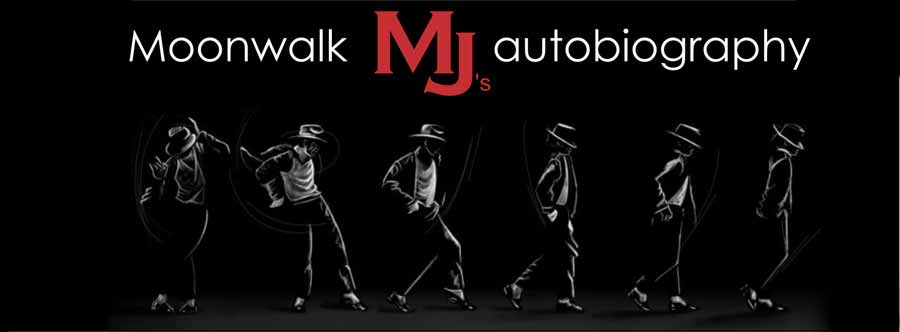
Moonwalk – MJ’s autobiography
In 1988, Michael Jackson released his only autobiography, Moonwalk, in which he wrote about his childhood, ‘The Jackson 5’, and the abuse he had suffered. He also wrote about his facial appearance, saying he had had two rhinoplastic surgeries and a dimple created in his chin. He attributed much of the change in the structure of his face to puberty, weight loss, a strict vegetarian diet, a change in hair style and stage lighting. Moonwalk sold 200,000 copies and reached the top position on The New York Times best sellers list.
MJ then released a film called Moonwalker, which featured live footage and short films that starred Jackson and British actor Joe Pesci. The film was originally intended to be released in theaters, but due to financial issues, the film was released direct-to-video. It saw a theatrical release in Germany, though. It debuted atop the Billboard Top Music Video Cassette chart and stayed there for 22 weeks.

Back with Dangerous
After briefly disappearing from the music scene, Michael re-emerged with “Dangerous” in 1991. He ditched mentor Quincy Jones for the more modern master of swing beat, Teddy Riley. Swing beat or jack swing was the latest dance fad to be adopted by club-hopping blacks in New York. Michael wanted a more contemporary sound and Riley gave him just that. Released in 1991, the new album made its entry at the number one position on the charts and Michael signed the biggest ever recording contract with Sony Music.
The catchy “Black or White” was also a chart topper and gave the message of racial equality. Perhaps in an effort to give the music video an urban edge, Michael inserted a violent segment towards the end. He was shown destroying cars and then grabbing his crotch in an obscene gesture. Incongruous with the rest of the video, this portion did not go down well with his prime-time viewing audience who collectively slammed it.
Adding to Michael’s troubles was the release of alternative rock group Nirvana’s “Nevermind” in 1992 that spelled doom for Dangerous and pop music as a whole. It replaced Dangerous on the charts and Michael never knew what hit him. His “In the Closet” and “Remember the Time” still managed to make it to the Top Ten positions. However, the anthem “Heal the World” and the edgy “Jam,” nominated for two Grammy Awards, failed to perform in the US market. “Heal the World” though surprised Michael with its success in Europe and the UK (where it sold 450,000 copies and reached the number two position).

Wacko Jacko
“I go around the world dealing with running and hiding.. I can’t take a walk in the park… I can’t go to the store… I have to hide in the room. You feel like you’re in prison.”
As his music career hit a roadblock post 1993, Michael’s behaviour went out-of-control, seemingly into bizarre and inexplicable territory. Adding fuel to public curiosity and intense media scrutiny was Michael himself. Shy and insecure by nature, he chose to withdraw from the public eye and was reluctant to give the media interviews about his private life. As a result, wild rumours about him began doing the rounds of the press. Michael made matters worse by withdrawing further into his shell. Some of the rumours however, proved to be true. An immature and childlike Michael did prefer the company of animals to complicated human beings. He had adopted a chimpanzee called Bubbles who would accompany him during recording sessions for Bad. The media had no way of explaining these strange preferences to his fans and instead, dubbed him ‘Wacko Jacko’, a moniker Michael hated with passion. It was then that he decided to call himself King of Pop. However, Wacko Jacko stuck and he was not able to get rid of it for the rest of his life.
People also wondered at Michael’s abnormally soft and feminine voice. They felt he underwent hormone treatments to preserve its youthful quality, a rumour Michael did not bother to refute. Some stories were weird and designed to entertain the public at the star’s expense. For example, Michael was rumoured to have bought the skeleton of Elephant Man John Merrick from London Hospital. This was later proved to be false as Michael did view the bones but never bought them.
Did he really sleep in a hyperbaric room to reverse the aging process? There is no way of knowing and it may be one of Michael’s mysteries that remain unsolved. However, he did try to explain some of the perceived eccentricities and insults. For instance, the international black community was outraged by Michael’s light skin tone. He was becoming fairer with each passing year. They alleged, that the star who sang “It don’t matter if you’re Black or White” was a racist himself and was trying to become white.
In the past, Michael had alluded to the burn injuries he sustained while trying to shoot a Pepsi commercial. During the Oprah interview in 1993, he revealed that his skin tone had changed since then due to a disorder that destroys the pigmentation of his skin. Michael was found to have a skin condition called vitiligo in which there is a loss of brown colour (pigment) from areas of skin, resulting in irregular white patches that appear like normal skin. Always battling health issues, he also had lupus, a systemic autoimmune disease, which causes skin to appear blotchy with rashes.
At the center of controversy and attracting oodles of public interest was Michael’s Neverland Ranch in California built at a staggering cost of 17 million dollars. Why did a grown man need his own amusement park and zoo? Befuddled by such questions, people made their own assumptions about Michael, ranging from him being a reclusive billionaire at best to an asexual predator and a psychopathic freak show at worst.
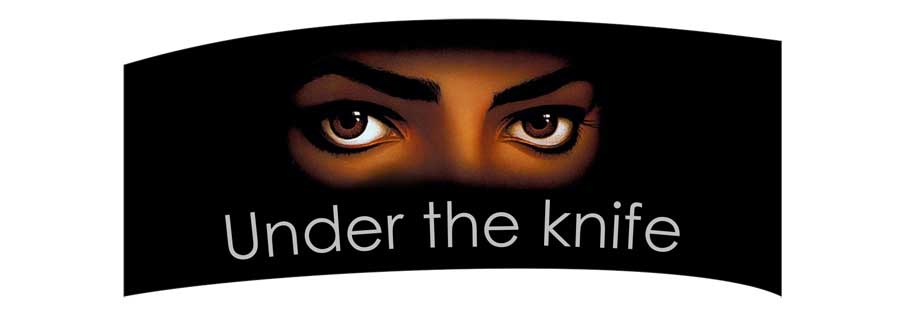
Under the knife
In many ways, Michael had always been an escapist, slowly carving out a new identity, a more pleasant reality and a better-looking face. It is difficult to comprehend, how a star adored by millions all over the globe could be insecure about his appearance and think of himself as ugly. Michael was so unhappy with his facial features that he went under the knife not just once but a number of times. Willing to risk it all to attain the perfect look, the misguided superstar underwent multiple procedures till what remained was a hollow, scarred shell.
His concerns about his facial features can be traced to his childhood when an overly critical father would frequently tell him that his nose was too large. While most children get over their adolescent obsession with appearances, Michael was unable to do so. The scars of an abusive childhood ran deep within him. His quest for perfection, which made him so successful in the music industry, extended to his looks and image. It became an almost maniac need and addiction that he could not discard for the rest of his life.
Michel’s first tryst with plastic surgery took place when he was 25. It was the year 1983, when Thriller was released. In the video, one could clearly see his more defined smaller nose and shapelier eyebrows. The black community noticed too and there was a mini uproar as Michael was said to be favouring delicate, white features over his normal facial structure. In the late eighties, Michael’s appearance began changing drastically and evolved into the bizarre. He got another nose job done to make it narrower. Michael also underwent a procedure to get permanent eyeliner around his eyes. Some say he started wearing make-up while making public appearances.
At this stage, though his face looked different from his childhood years, Michael’s overall look still bore some resemblance to his original features. But what happened next was both shocking and horrific in equal measure. In an effort to acquire high cheekbones, Michael went under the knife once again. However, this time the surgery went wrong and his face was scarred for life. Perhaps, in order to conceal his experimentation with plastic surgery from his fans, Michael did not sue the surgeon responsible for permanently destroying his face.
To rectify the irreparable damage done to his facial features and further improve them, Michael went on to get a cleft in his chin, a manlier jaw, tinier nostrils, firmer cheeks, and a prosthetic tip for his nose. Caught in an endless cycle of damage and repair, Michael would be dissatisfied with the results of each procedure and would then move on to something new. For instance, he got the cleft removed in favour of a chin implant.
In June 1992, the media had a field day as Michael’s pictures, with over 10 surgeries playing havoc with his face, were splashed all over the newspapers and the internet. Michael even sued one of them, Daily Mirror, for their front-page photograph of him tagged as ‘hideously disfigured’.
His celebrity friends were disturbed by Michael’s experiments but could do nothing about it. One of them was spiritual guide and doctor, Deepak Chopra, who knew him for almost 20 years. “What became his compulsion with cosmetic surgery was an expression of self-mutilation, a total lack of respect for himself”, he said, trying to explain Michael’s irrational behaviour. According to some medics, he also had body dysmorphic disorder, where the patient’s self-image is completely distorted, and he would often starve to punish himself. Michael’s troubles took on a more serious note as allegations of child sexual abuse emerged, threatening to destroy his music career forever.
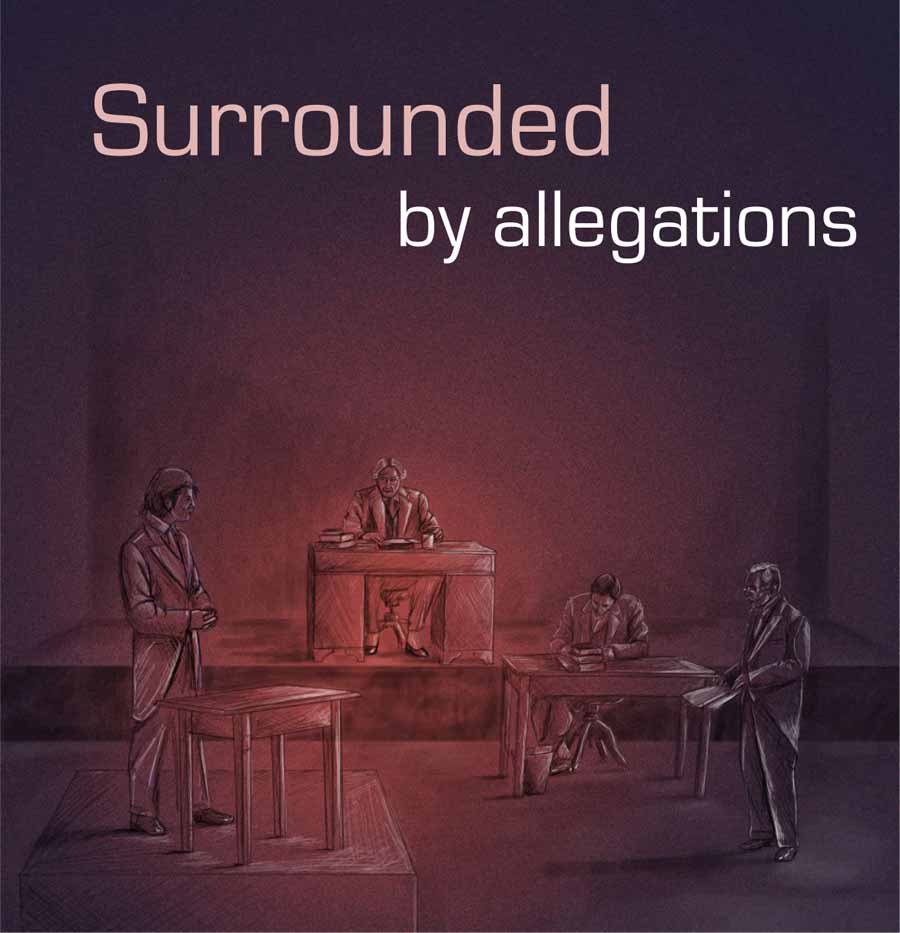
Surrounded by allegations
In the summer of 1993, Jackson was accused of child sexual abuse by a 13-year-old boy named Jordan Chandler and his father, Dr. Evan Chandler, a dentist. What followed was a storm of allegations and counter allegations that knocked Michael off his feet and almost killed his music career.
Michael first met Jordan who was a fan of his in May 1992. At that time, Jordon’s father Evan was happy and proud that his son could count a celebrity among his friends. He would milk the connection for all it’s worth and boast about it to all his friends. Tabloids like the National Enquirer started carrying stories of how Michael had become a part of the Chandler family. In a piece called “Michael’s New Adopted Family,” Evan said he was jealous of Jordan’s attachment to Michael who had stolen him from his father. Michael would invite Jordan, his stepsister and mother June, who had his custody, for weekend trips to his Neverland Ranch. Jordan and his mother also attended the World Music Awards with him. Evan wanted Michael to build him a new home and allowed him to sleep with his son and step brother in the same room during a five-day visit to his place. Always resentful of Jordan’s hero worship of Michael, who intruded into his time alone with his son, Evan did admit that he had never actually seen the two in a state of undress together nor had he ever caught them in a compromising position.
However, all this changed in June 1993. Evan questioned his former wife June about his suspicions regarding Michael’s relationship with Jordan. June denied any such incidents. It is rumoured that Evan then called Michael threatening to go public with his allegations. Michael’s lawyer, Ben Fields, stepped in to take control of the situation. Evan’s lawyer Barry Rothman got a psychiatrist to confirm reasonable suspicion of child abuse in a letter. On August 4, Evan and Jordan met Michael to reach an out-of-court financial settlement. Evan and Rothman said no to Michael’s offer of $350,000 to settle the matter. Three days later, June, who supported Michael, sued her former husband forcing him to send Jordan on the Asian part of the Dangerous World Tour.
Things took a turn for the worse as it was discovered that Michael would allow children to sleepover at Neverland. On August 18, he began to be criminally investigated by the Los Angeles police. Over 30 children, including Michael’s friends Wade Robson and Brett Barnes who had stayed with Michael in the Neverland Ranch numerous times, denied ever being molested by him though many had slept in the same bed as him. A few years later, he was once again dragged to court by 13-year-old Gavin Arizo who appeared in a documentary called ‘Living With Michael Jackson’.
While most members of Michael’s huge family stood by him through this ordeal, La Toya who had never been close to him, emerged out of the woodwork and accused him of being a paedophile. “I cannot and will not be a silent collaborator in his crimes against young children …Forget about the superstar, forget about the icon. If he was any other 35-year-old man who was sleeping with little boys, you wouldn’t like this guy”. Fortunately, Michael was acquitted of all charges and La Toya later admitted that her then husband had forced her to make these claims for monetary benefit.
A broken Michael, perhaps in an effort to restore his public image, then sought solace in the arms of the legendary Elvis Presley’s daughter, the beautiful Lisa Marie Presley.
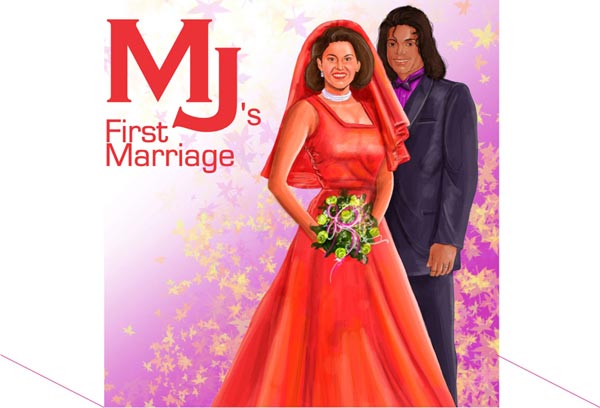
MJ’s First Marriage
The fairytale romance between Michael and Lisa began when Michael was just a teenager. Lisa Marie used to attend the Jackson 5 shows in Las Vegas. During the child sexual abuse ordeal, he met Lisa Marie once again through a friend and she became his support system. They would have long chats on the telephone. “I believed he didn’t do anything wrong and that he was wrongly accused and yes I started falling for him. I wanted to save him. I felt that I could do it”, she said.
Largely a long-distance relationship, Michael proposed marriage to her over the phone, in his own unique, unromantic way. “If I asked you to marry me, would you do it?” he said. Lisa Marie said yes. From the beginning, the media and public at large were sceptical of the union, calling it a marriage of convenience and going to the extent of saying it was a hoax perpetrated by Michael and his public relations department. Adding credibility to this allegation was the asexual, friendly peck that Michael gave his new wife for a file photo after their wedding in the Dominican Republic in May 26, 1994.
Again, it was left to Lisa Marie to defend their marriage. It was, in her words, “a married couple’s life… that was sexually active”. Despite their efforts, Michael and Lisa Marie had frequent arguments. Michael wanted to be a father while Lisa felt that he was too emotionally immature to be a parent and that he was the one who needed parenting. Following several more troubled months, Lisa filed for divorce citing irreconcilable differences and their marriage of two years ended in August 1996.
The divorce proved difficult for Michael, who spent several weeks lamenting his loss. Lisa was the first person with whom he had connected on such a high level. She had supported him as he faced allegations and became dependent on pain medication. At the time, Michael was afraid that there would never be another woman who could make him feel the way his ex-wife had. He eventually realized that he had to move on; he had a world tour coming up and music to work on. Jackson also knew that Lisa would never make him a father, which he longed to be.

MJ remarries
Even before his marriage to Lisa Marie Presley, Michael remained extremely close to Nurse Debbie Rowe who had been helping him with the treatment of vitiligo ever since he was diagnosed with the condition in the mid 80s. As Lisa Marie had refused to carry Jackson’s children, Rowe offered to give birth to a child for the pop singer through surrogacy. Shortly after the separation of Lisa and Michael, Rowe became pregnant with MJ’s child but suffered a miscarriage in March 1996.
Several months after his divorce with Lisa, Michael Jackson embarked on the first leg of his History World Tour on September 1996. One month into the tour, his personal life made headlines as it was revealed that Debbie Rowe was once again pregnant with his child. When the news of Rowe’s pregnancy reached Michael’s mother Katherine, the Jackson family matriarch urged her son to wed the mother of his unborn child. Katherine did not want her son to be like his father, who had produced an illegitimate child with a woman while married to Michael’s mother. The words resonated with the musician, who did not want to repeat his father’s sins. He called Rowe and asked her to meet him as soon as she could, in Australia, where he was staying. There, MJ announced his plans for them to wed the very next day. Jackson and Rowe got married on November 13, 1996, at the Sheraton on the Park Hotel in Sydney, Australia.
Just like his first marriage, media and public reaction to the marriage was once again negative and cynical. The reports alleged that the relationship was an economic one; she was in it for the money and he sought a baby which was later found to be true.

MJ becomes a father
Michael and Debbie had two children, Michael Joseph “Prince” Jackson Junior (born February 13, 1997) and Paris Michael Katherine Jackson (born in April 3, 1998). The kids grew at Neverland Ranch and were cared for by a team of six nannies and six nurses. Their mother Debbie was hardly around and soon stories emerged that Debbie had abandoned her children.
“My kids don’t call me Mom because I don’t want them to. They’re Michael’s children. It’s not that they are not my children, but I had them because I wanted him to be a father… If he called me tonight and said let’s have five more (children), I’d do it in a heartbeat”, said Debbie trying to explain her relationship with Michael and their children.
Feeling uncomfortable with their arrangement, Debbie Rowe asked Michael for a divorce, which he granted without fuss on October 8, 1999. Debbie received around $10 million in a settlement, which started with an immediate payment of $1.5 million. With the divorce, Debbie gave Michael full custody rights to their children. Following the divorce, Michael went on to have a third child. Prince Michael II was born on February 21, 2002, to an unnamed surrogate mother. Michael stated that the baby was produced through artificial insemination using his own sperm cells and he was not aware of the identity of the mother.
Nicknamed “Blanket,” Michael had infamously dangled his new born son from the balcony of his hotel room in Berlin over a crowd of horrified fans. There was widespread outrage over his lack of parenting abilities. He later admitted, “it was a terrible mistake and I would never intentionally endanger the lives of my children”.
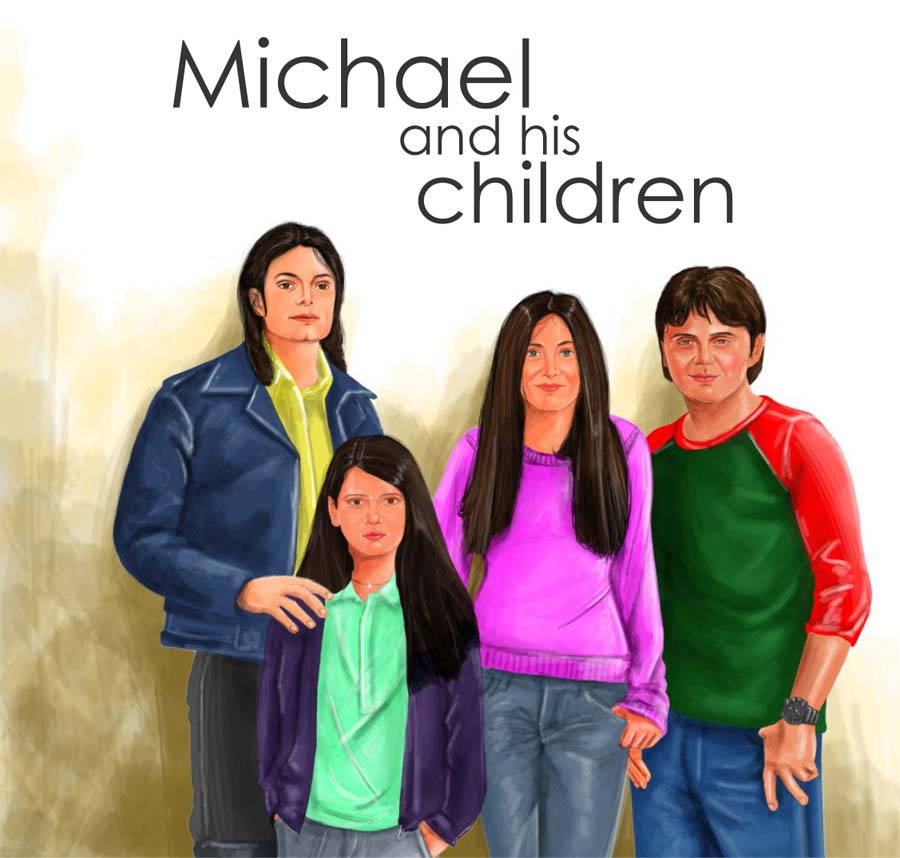
Michael and his children
Michael was very protective about his three children and would even shield them behind masks when they went out in public. He wanted them to be highly educated and follow a noble and well-respected profession such as medicine. He had seen a tumultuous time as a child artist and did not want his children to go through the same troubles. His daughter Paris particularly showed an early interest in anatomy and so MJ arranged for his personal physician, Dr. Conrad Murray to regularly speak to Paris and Prince about what it takes to be a doctor.
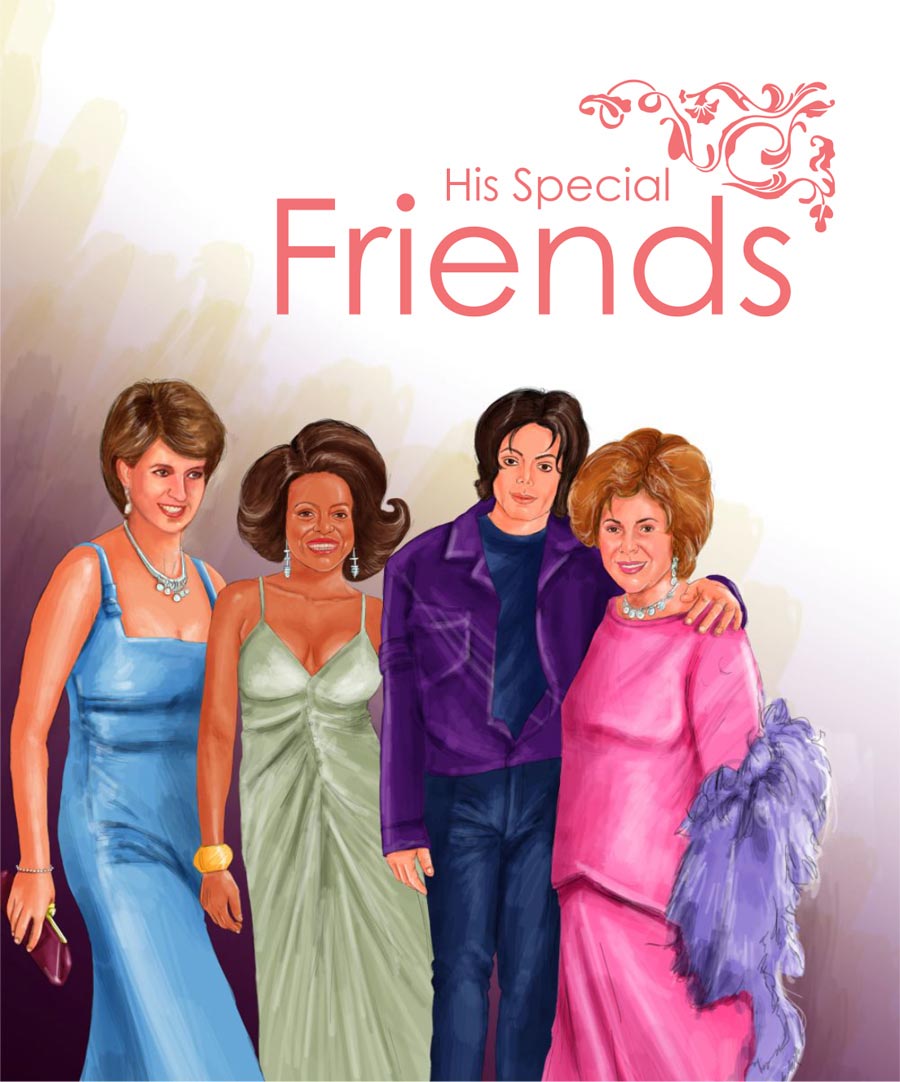
His Special Friends
MJ shared special relations with a host of A-list celebrities including Elizabeth Taylor, Princess Diana and Diana Ross. He was especially close to Princess Diana. They had first met at a Wembley gig in 1988 when he handed her black Bad tour jackets for Princes William and Harry. Just before Diana’s death in 1997, Michael was spending thousands a month on phone calls to her.
Veteran actress Elizabeth Taylor was one of Michael’s closest friends. She coined his nickname, the King of Pop, which he seized on and used in his publicity afterwards. It all began during the mid 80s when Taylor walked out from one of Jackson’s concert in Los Angeles Dodgers Stadium. Learning of her abrupt exit, Michael called Taylor almost in tears. She assured the singer that she left due to bad visibility and not a poor performance. That short phone call became a three-hour conversation, and the beginning of their very ling and odd relationship. Just like Michael, Taylor had tasted stardom at a very young age; neither had a childhood and both felt they could relate to each other. Though their relationship was mostly private, she vocally supported MJ when he was accused of child molestation in 1993 and again in 2005..
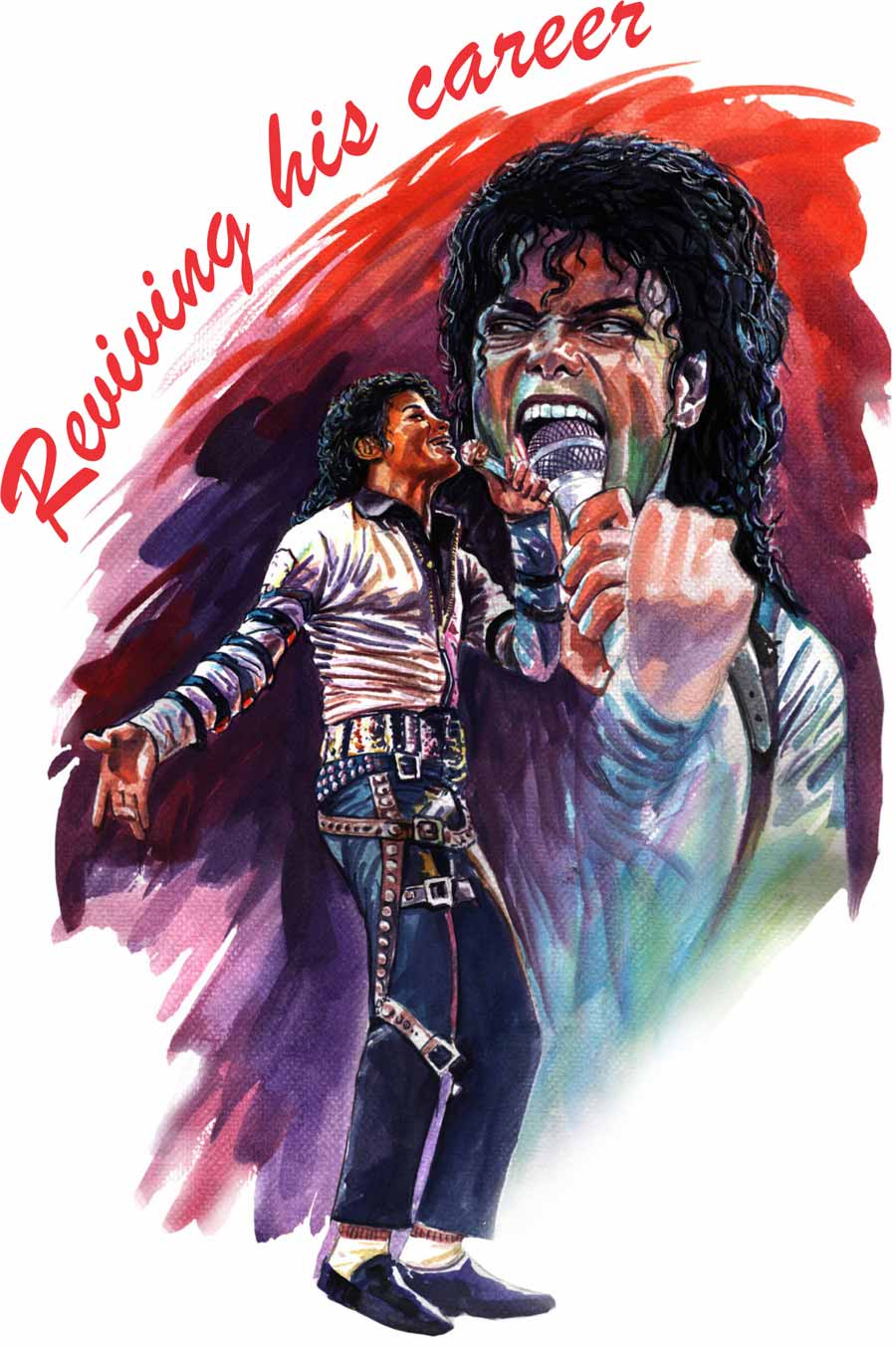
Reviving his career
2001 saw Michael celebrating 30 years as a solo artist with two shows in New York. Joining him on stage were big names in the music industry like Shaggy, Whitney Houston, Usher and Destiny’s Child. He also reunited with his brothers in an unforgettable performance. The same year he released ‘Invincible’ whose single “You Rock My World” was a huge hit.
Differences arose with Sony Music whom Michael blamed for not promoting the album properly. Michael also alleged racial discrimination. As a result, his next single “Cry” was of shoddy quality and did not even feature him. Never the one to give up easily, in 2003, Michael released another album called ‘Number Ones’, a collection of his greatest hits, along with a new single called “One More Chance”.
Then after a hiatus of six long years, Michael retuned in 2009 when he announced a tour at the prestigious O2 arena in London. This was to be his final curtain call and the tour was aptly titled ‘This is It’. His fans reacted with excitement and over 750,000 tickets were sold within minutes of the announcement. The initial plan was for 10 concerts in London, followed by shows in Paris, New York City and Mumbai. But with the astounding response from fans, the concert count was increased to 50 dates. However, the tour was not to be.
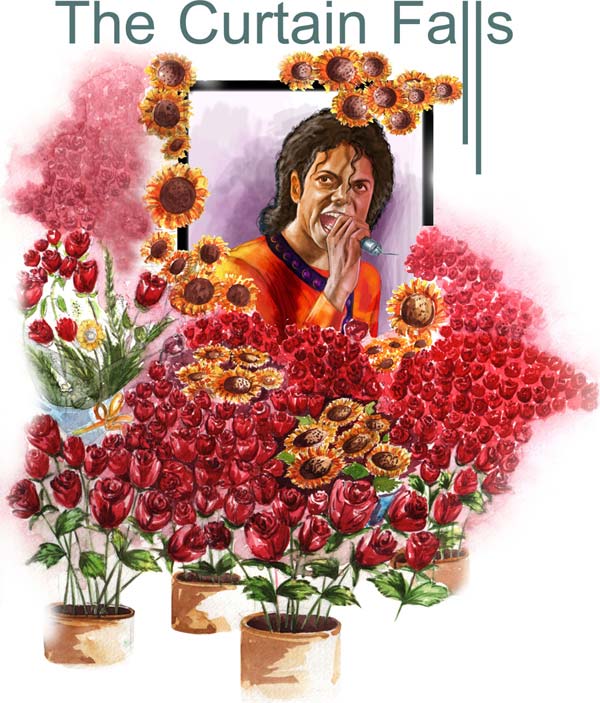
The Curtain Falls
In the weeks leading up to the tour, MJ rehearsed at the Staples Centre in Los Angeles. The concerts were supposed to commence on July 13, 2009, and finish on March 6, 2010. But less than three weeks before the first show was due to begin in London,Michael Jackson passed away, leaving the whole world in a state of shock.
On June 25, 2009, Michael Jackson died while in his bed, at his rented mansion at 100 North Carolwood Drive in Los Angeles. Just like his life, his death too was mired in controversy. It was later found that Michael died of ‘acute propofol intoxication’or a fatal overdose of the propofol drug used to treat insomnia. His personal physician who was present on the scene at the time of his death, Doctor Conrad Murray, was found guilty of involuntary manslaughter and sentenced to four years in prison.
Throughout his life, Michael had been rumoured to be addicted to painkillers and over-the-counter drugs. At the time of his death, he was believed to be consuming the narcotic painkiller Demerol for no valid medical purpose and was also taking sleep-inducing medication intravenously. Incidentally, both Demerol and propofol were found in Neverland during the child molestation probe. According to Michael’s make-up consultant Karen Faye, “he was weak, extremely thin and seemed to be under the influence of drugs”. She revealed that Michael had told her he would be unable to physically complete the upcoming tour. Other friends and medical professionals also confirmed that Michael frequently requested them for help in getting the drugs.
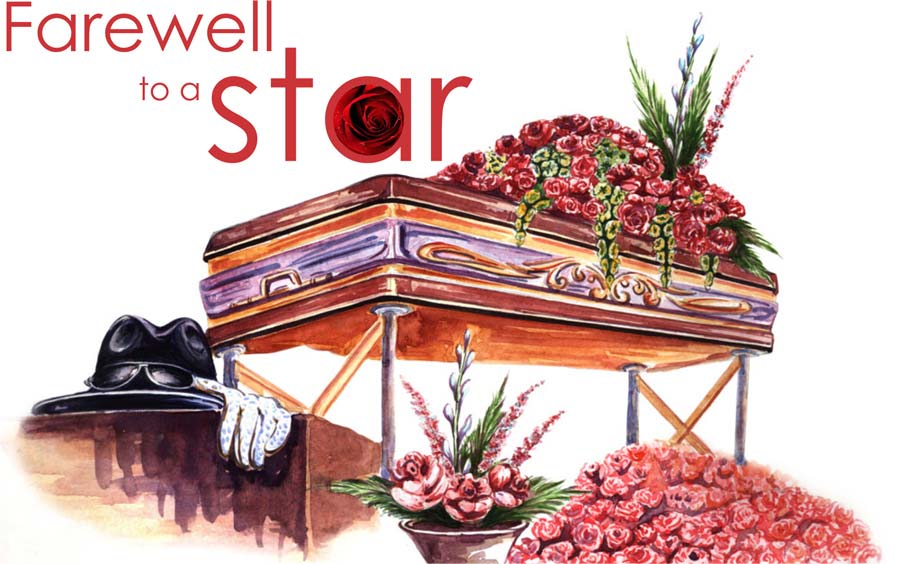
Farewell to a star
Michael Jackson was remembered on his third death anniversary this year with 10,000 roses on his grave. This was an elegant and a simple tribute to a man who dedicated his life to his fans and music.
The atmosphere was different when Michael passed away on June 25, 2009. The world united in sorrow and several prominent websites crashed as traffic soared. According to AOL, an online service provider, it was a seminal moment in internet history. The same media that had written conflicting reports about Michael during his lifetime honuored him in his death. A host of celebrities paid tribute but it was activist and talk show host Reverend Al Sharpton who, perhaps, summed it best at Michael’s memorial in Los Angeles, saying to his children, “Wasn’t nothing strange about your daddy. It was strange what your daddy had to deal with”. Ironically, Michael had the comeback of his dreams after his death as he became the best-selling artist of 2009.
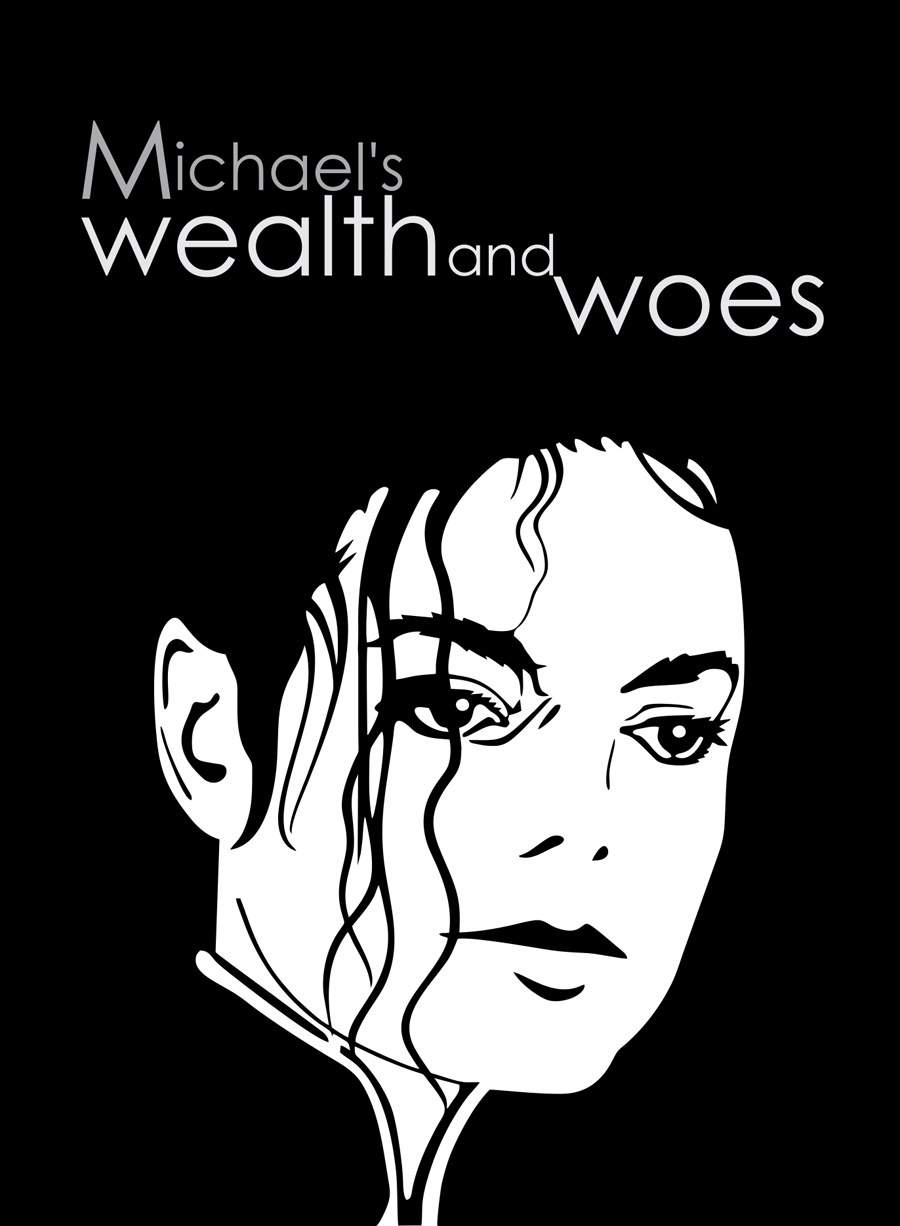
Michael’s wealth and woes
The stupendous success of MJ reflected in his overall earnings. In the last 25 years of Michael’s lifetime, it is estimated that he made more than $300 million from his own music royalties and another $400 million from concerts. As per reports which were published in 2007, MJ’s networth was $236.6 million comprising of $567.6 million in assets, which included Neverland Ranch and his 50% share of Sony/ATV Music Publishing catalogue, and debts of $331 million.
Michael Jackson was also reported to be one of the largest owners of property on the moon. In 2005, he bought a 1,200 acre plot in the Lake of Dreams and owned a smaller parcel in the Sea of Vapours. This was one of Michael’s several extravagant purchases that pushed the one time millionaire into a state of bankruptcy. The financial crisis started way back in 1993 when he had to settle against child molestation charges with a hefty $22 million. This was followed by several other lawsuits the following years and huge settlements.
To finance his rich lifestyle, Michael borrowed to the tune of $200 million from banks and in 2006 was spending $20 to $30 million more per year than he earned. He even had to sell his controlling stake in the Neverland Ranch and other memorabilia to raise funds for himself. Just before his death, MJ agreed to perform 50 concerts in spite of poor health conditions. The concerts were seen as his last attempts to get out of financial woes.
Following his death, all assets were transferred to the Michael Jackson Family Trust. MJ’s will stated that after his death, 20% of money made through royalties would go to various unspecified charities. Media reports suggested that settlement of Michael’s estate could last many years.
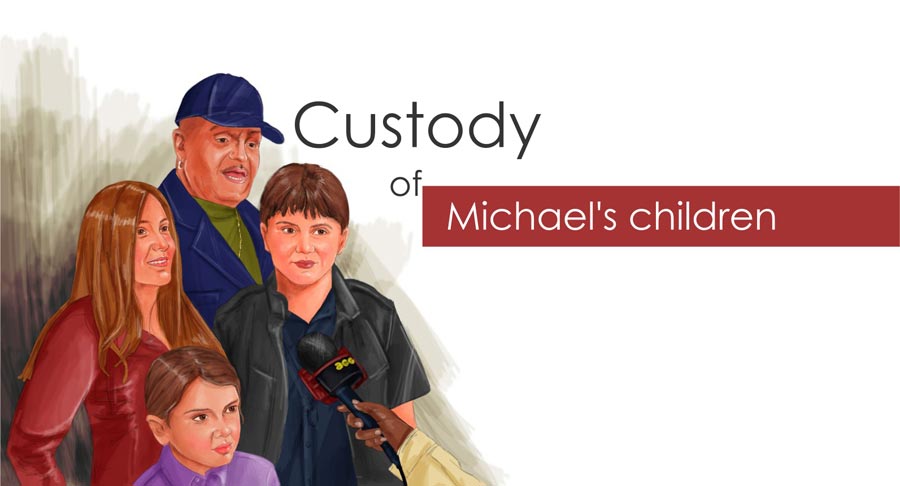
Custody of Michael’s children
As per MJ’s will, his mother Katherine was made the permanent guardian of Prince Michael, Paris and their half-brother Prince Michael II. MJ’s ex-wife Debbie, was granted visitation rights with her two children and was also entitled to receive spousal support payment.

The Jackson Family
Besides his three children, MJ is survived by his brothers, Jackie, Tito, Jermaine, Marlon, and Randy; sisters Rebbie, La Toya, and Janet; and parents Joseph and Katherine. Joe and Katherine are estranged, though still married. Joe, whose public image was tarnished in the 80s following revelation of his abusive nature, continued to receive financial assistance from MJ until the early 90s. Joe then started managing Janet and La Toya’s career through the nineties but that arrangement did not last for long either.
In one of MJ’s tribute event following his death, the insensitive nature of Joe once again made headlines when he was found talking to the media about his new hip-hop record label company.
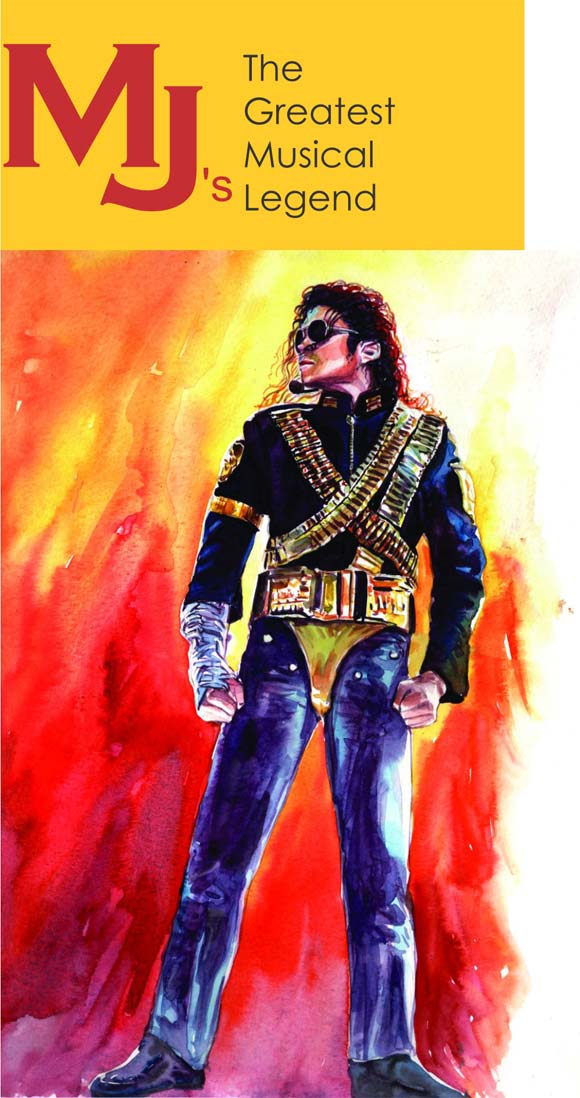
MJ – The Greatest Musical Legend
“MJ was not an artist who comes along once in a decade, a generation or a lifetime. He was an artist who comes along only once.” – recalls Motown chief Berry Gordy.
Truly, Michael was driven by his hunger to learn, to constantly top himself, to be the best. He was a consummate student who studied the greats and became greater. He raised the bar and then broke it several times and even shaped the musical entertainment industry for decades. He did live a dual personality to deal with the pressures of his stardom. Off-stage he was shy, soft spoken and childlike. But on-stage, MJ was a different creature altogether. When he performed, he gave his everything and he did this because he loved music and loved performing for his fans. This was reflected by the fact that he used to lose 10 pounds of body water in each of his concerts.
Undoubtedly, he made some poor decisions along the way and went through torrid periods in his life, but he also accomplished everything he dreamt of. Even at the age of nine, his passion was to be the greatest entertainer in the world and the little kid from Gary worked extremely hard to become one.
Beginning with the Jackson 5 and stretching until his death at the age of 50, Michael Jackson sold more than 750 million records worldwide. He scored eight platinum or multi-platinum albums, 13 #1 singles and 13 Grammy Awards. Thriller continues to be the biggest-selling non-compilation album of all time. Michael Jackson is also recognized as the most successful entertainer of all time by Guinness World Records.
Looking back, it is hard to believe how a little boy from Gary, Indiana, could achieve all this but he did it, with his music and dance that made him a global figure and a household name. He entertained millions around the world for over four decades and even after his death, MJ continues to have an influence on pop culture. He is the undisputed “King of Pop” and will forever remain in the hearts of music fans for years to come.
Next Biography





